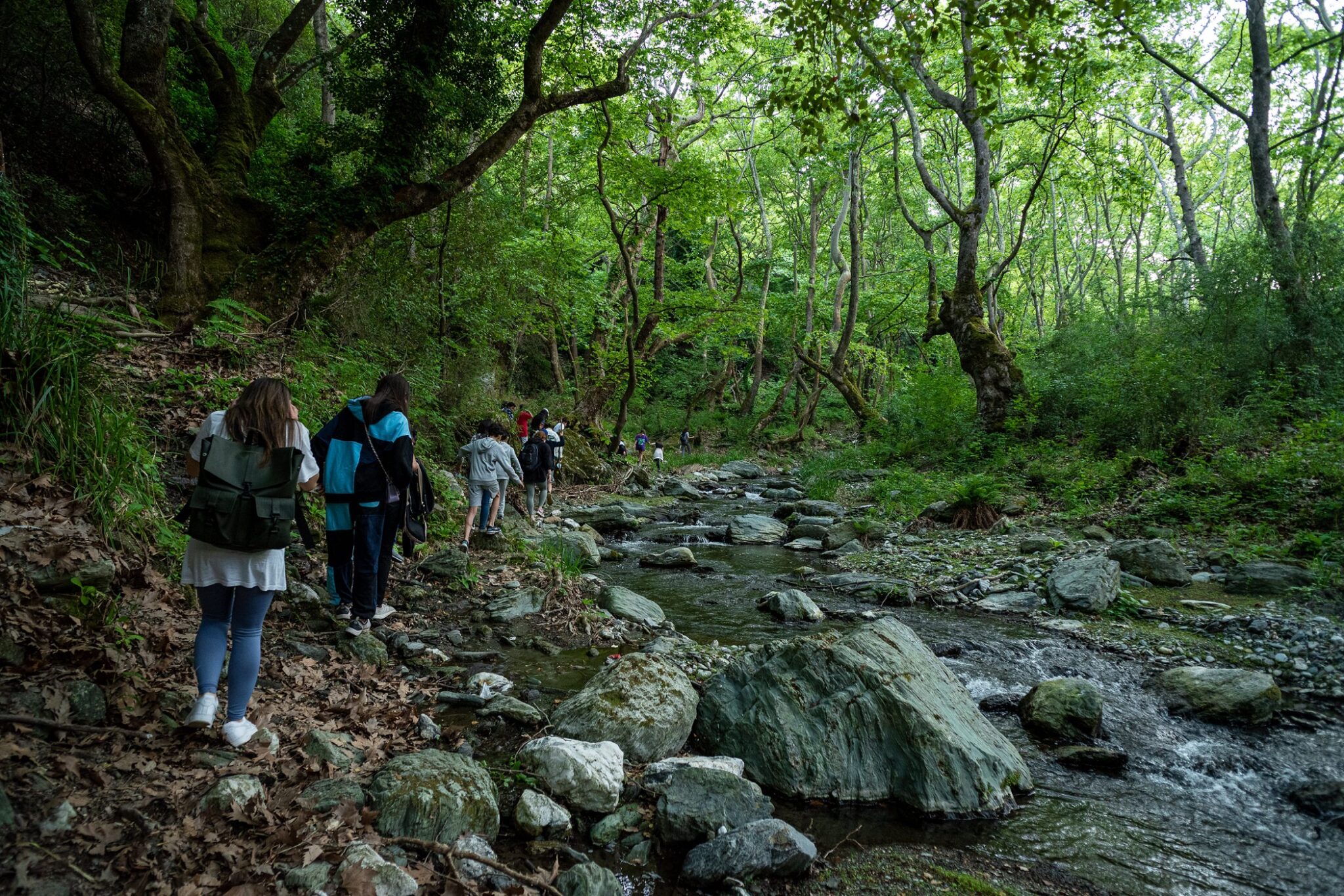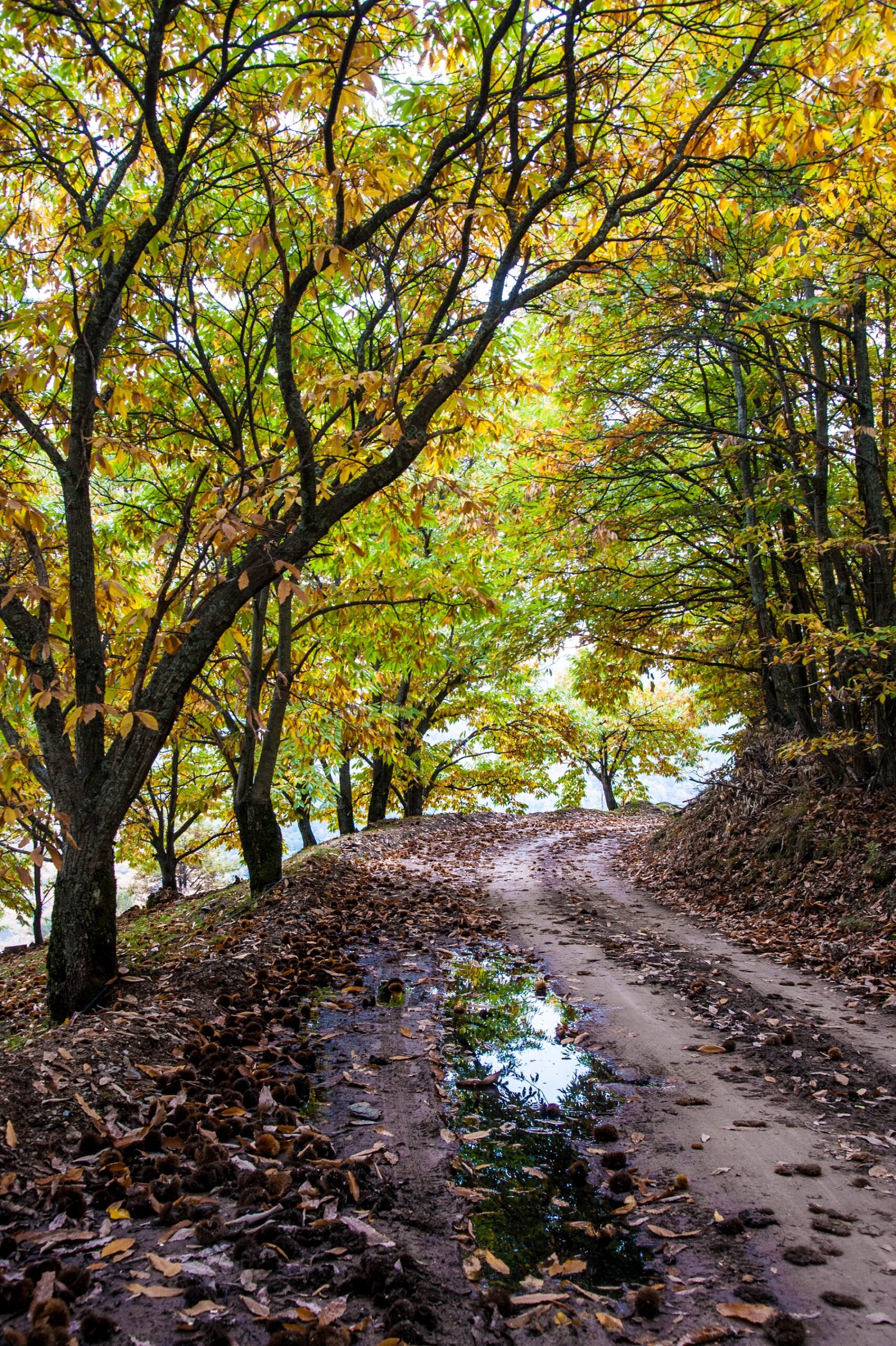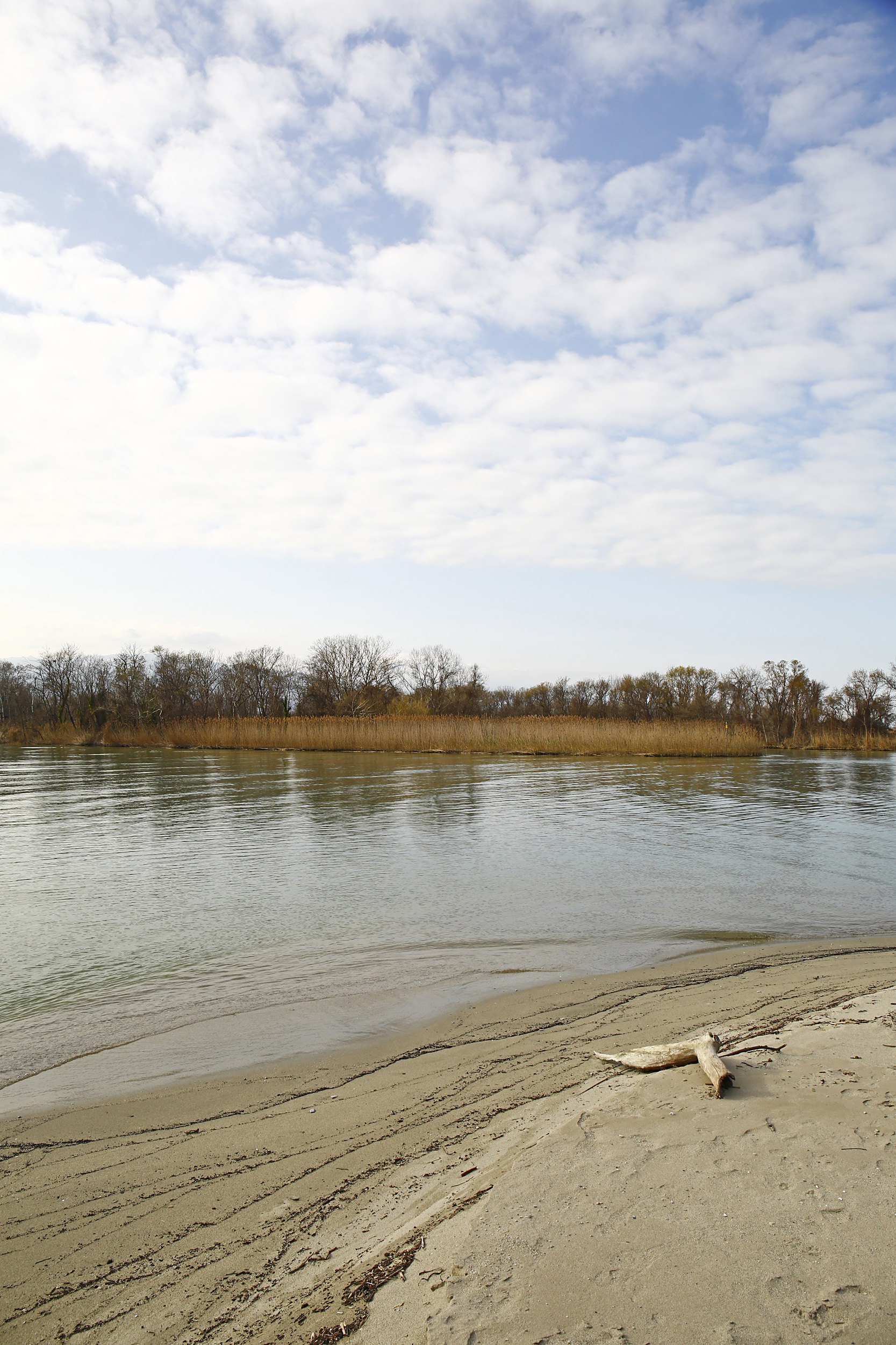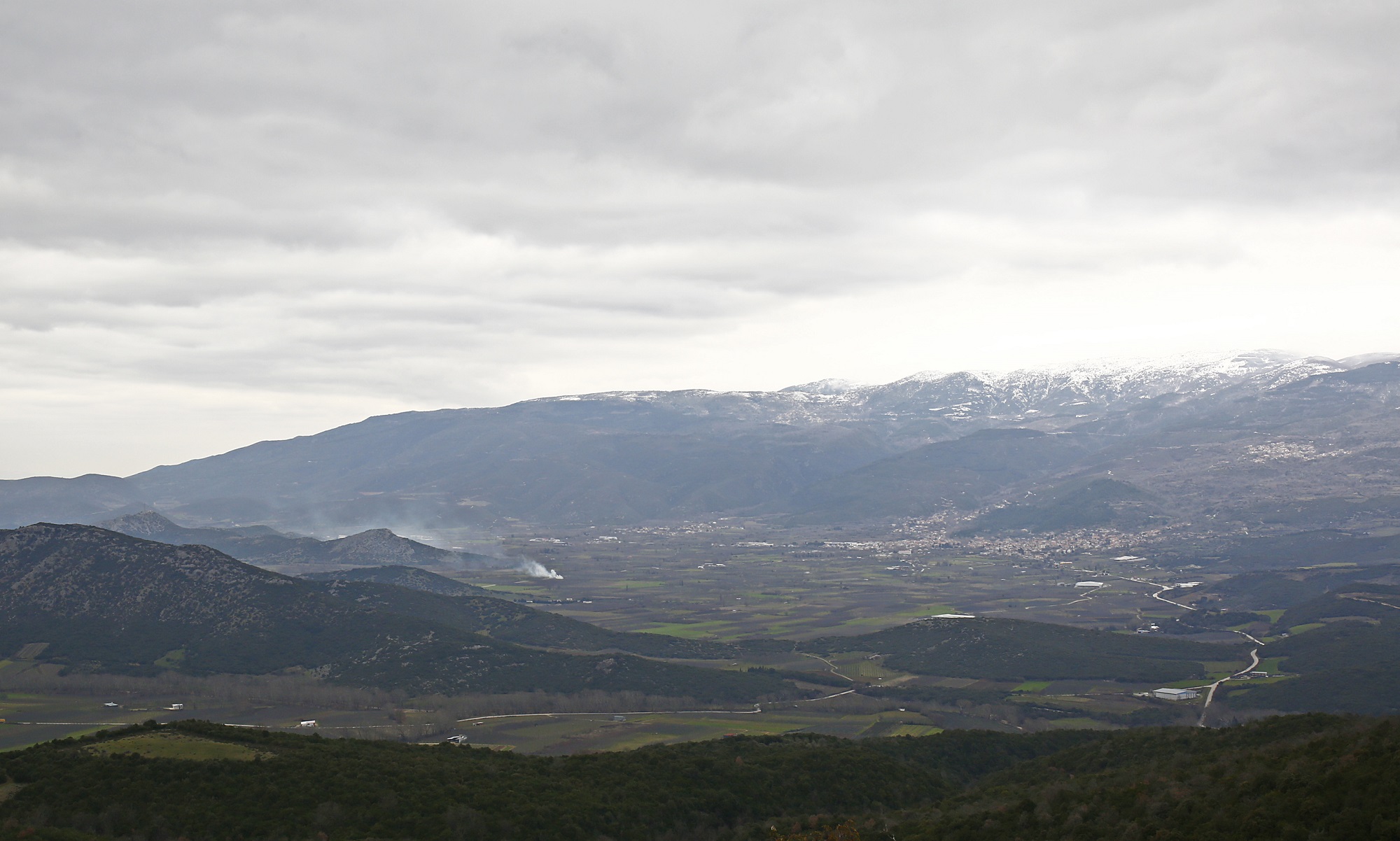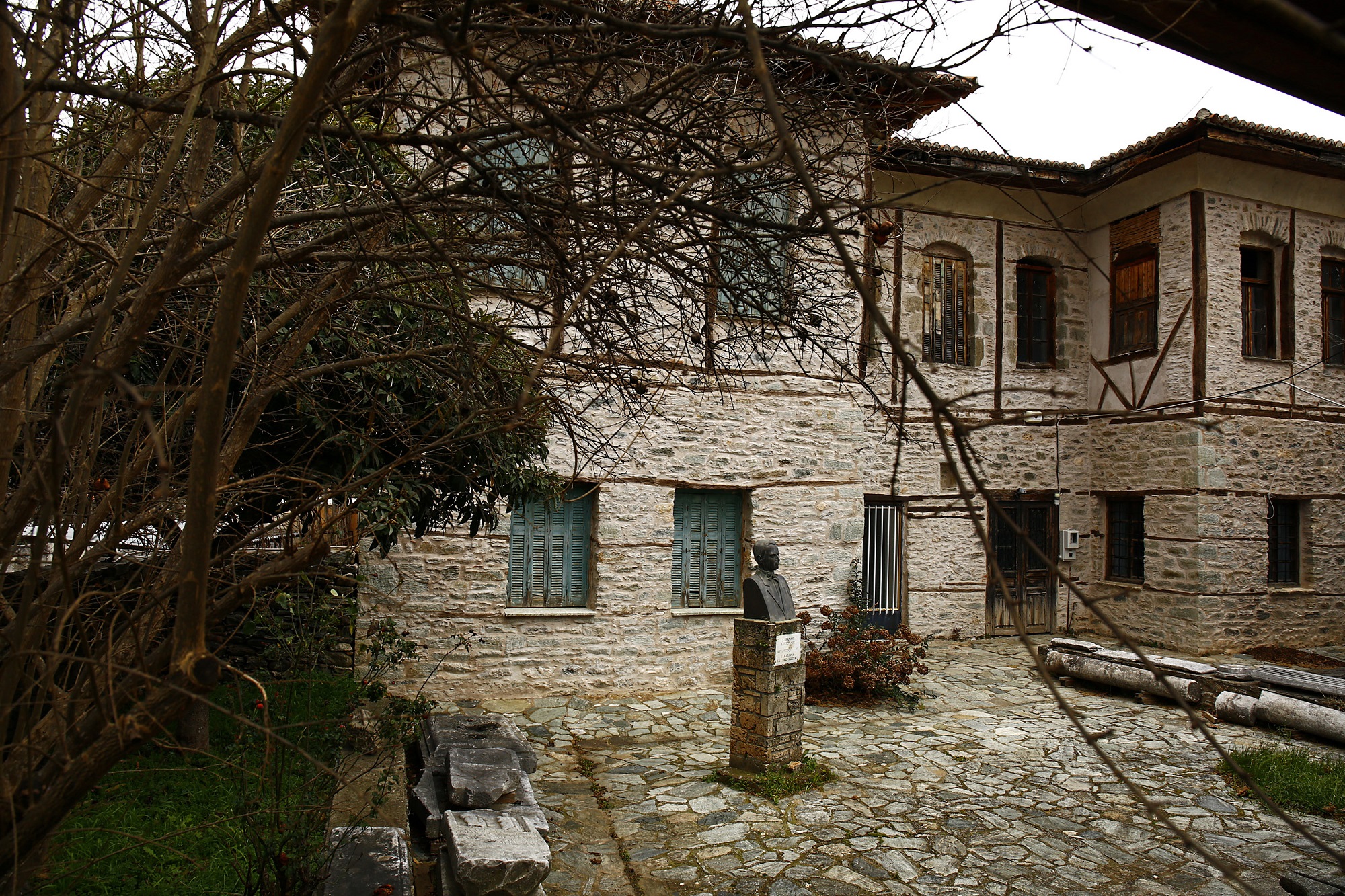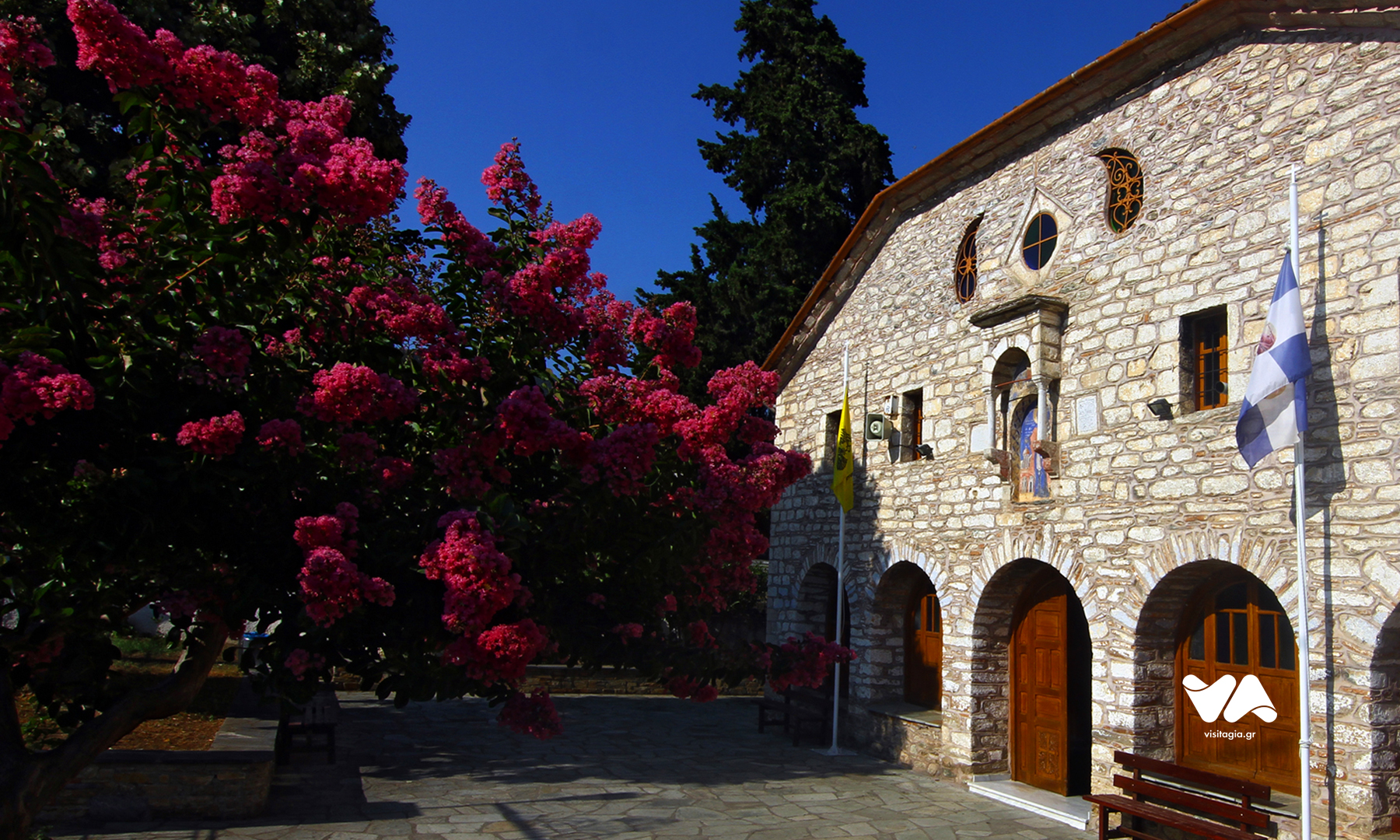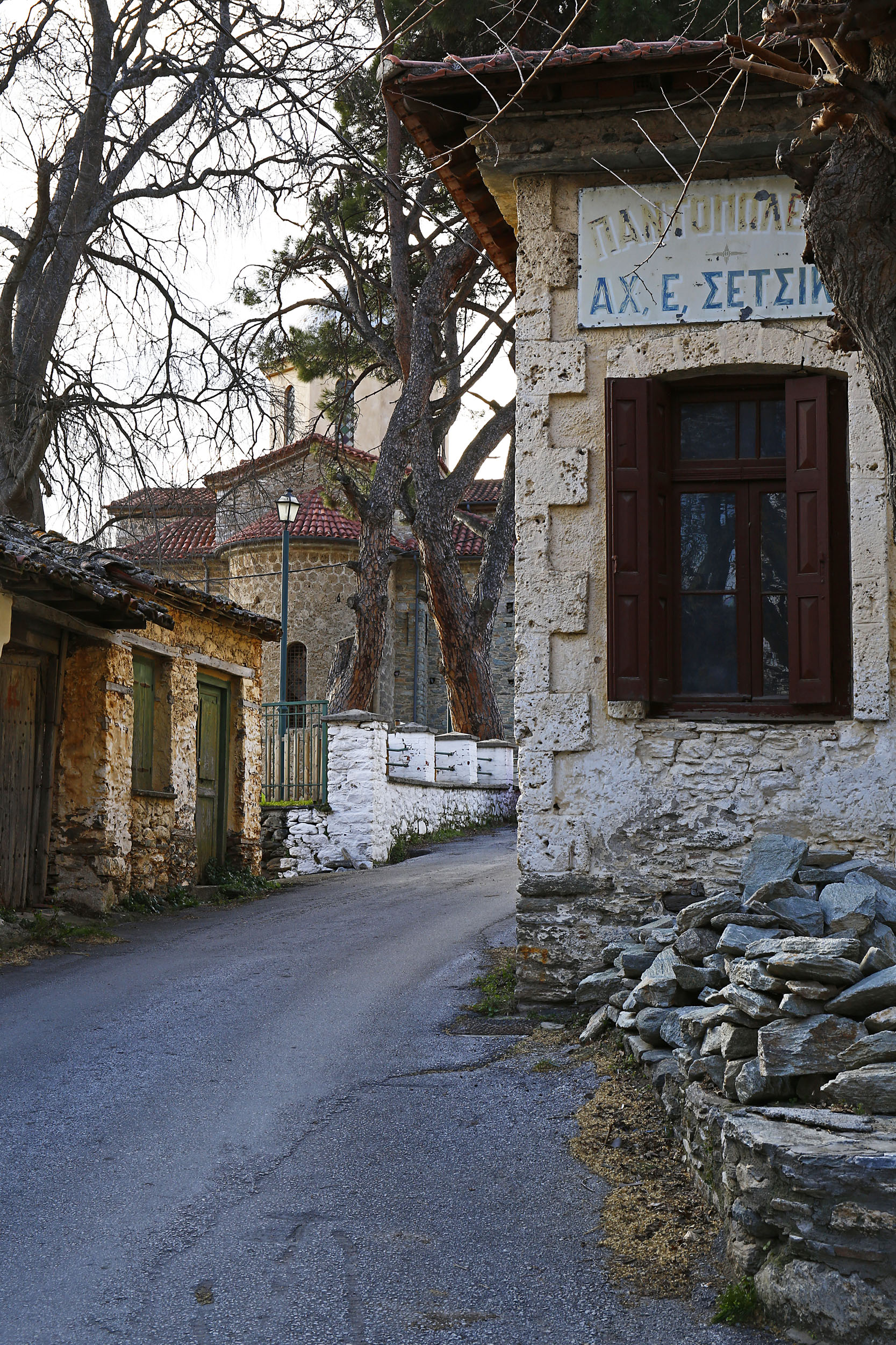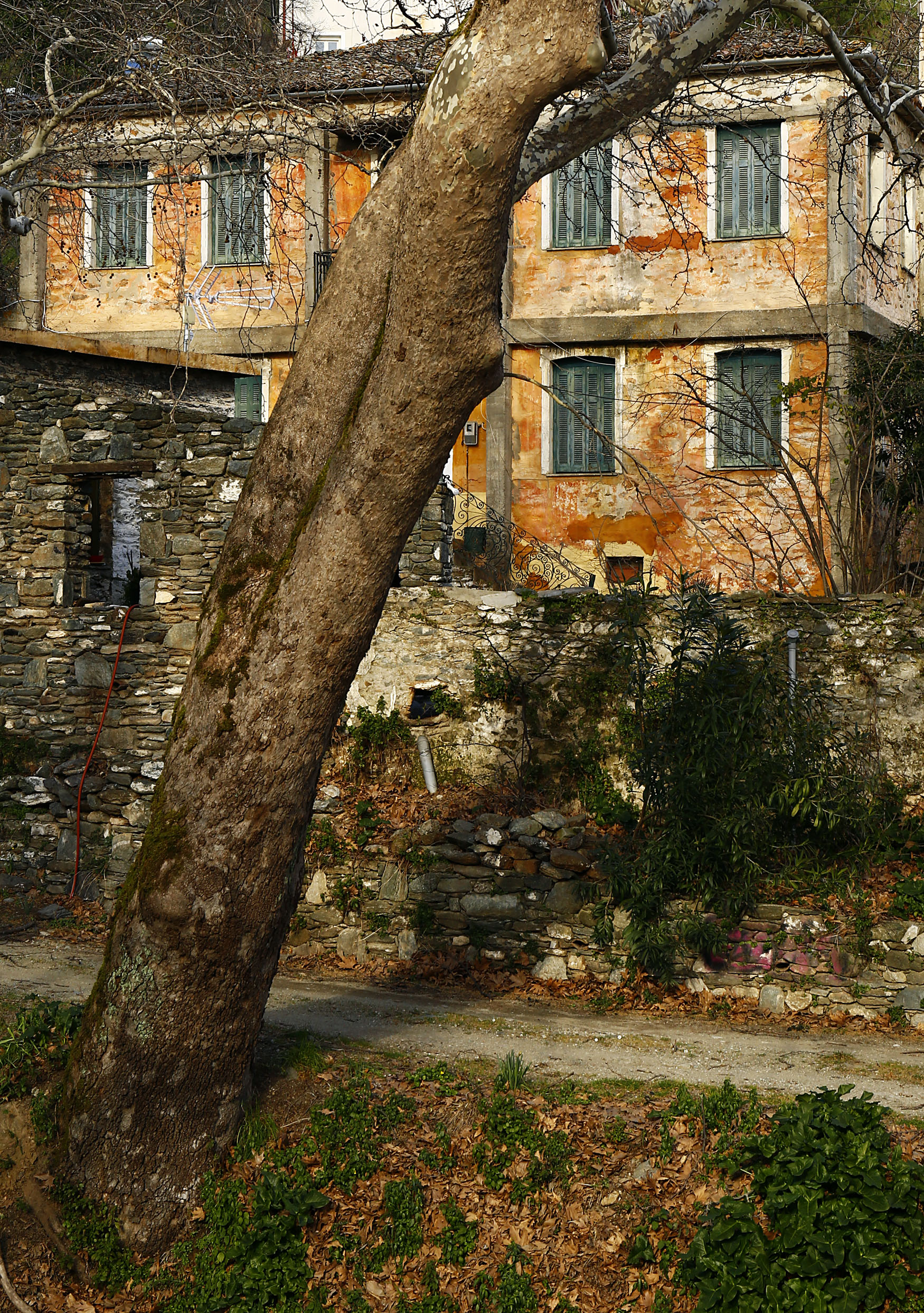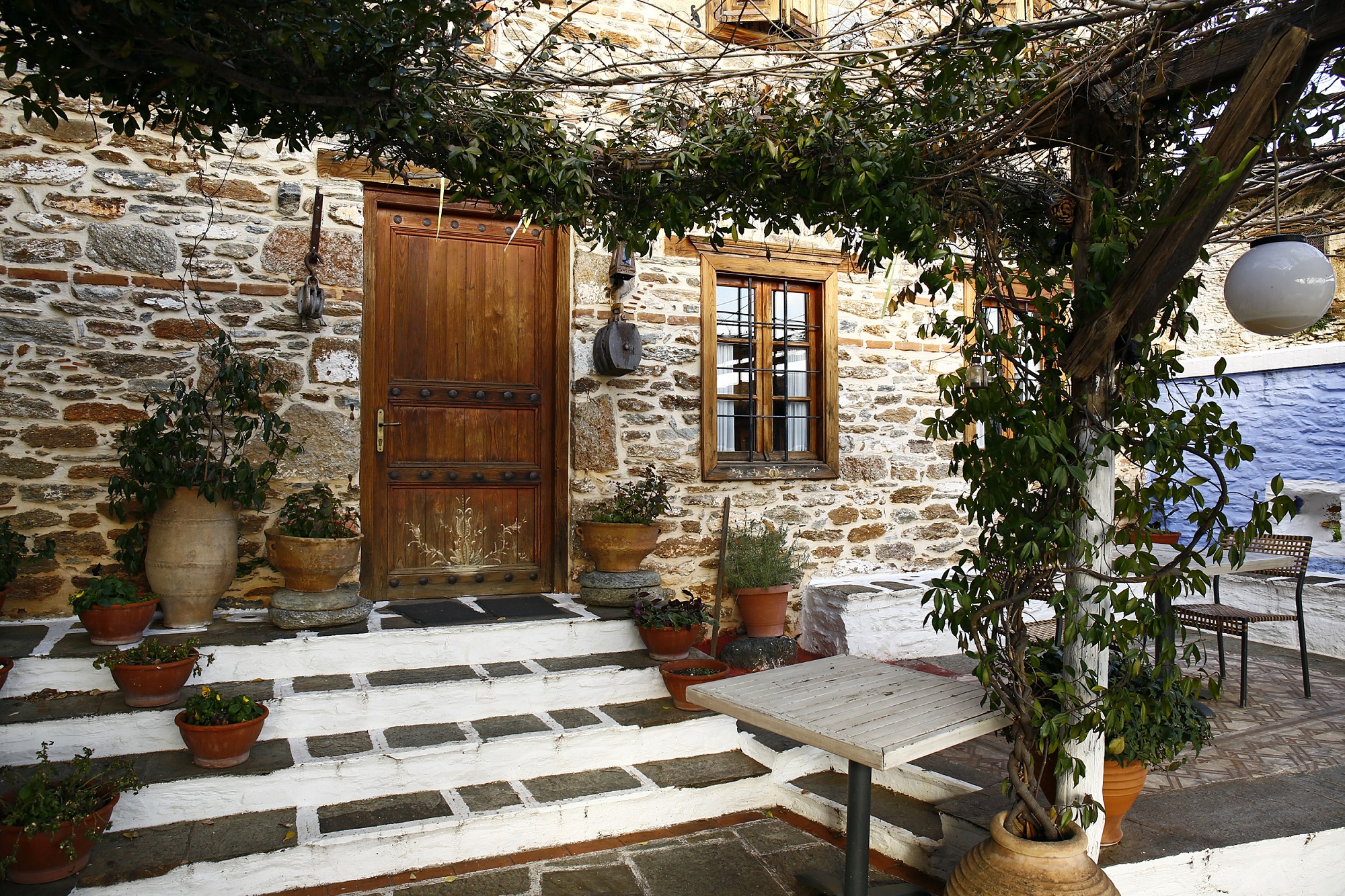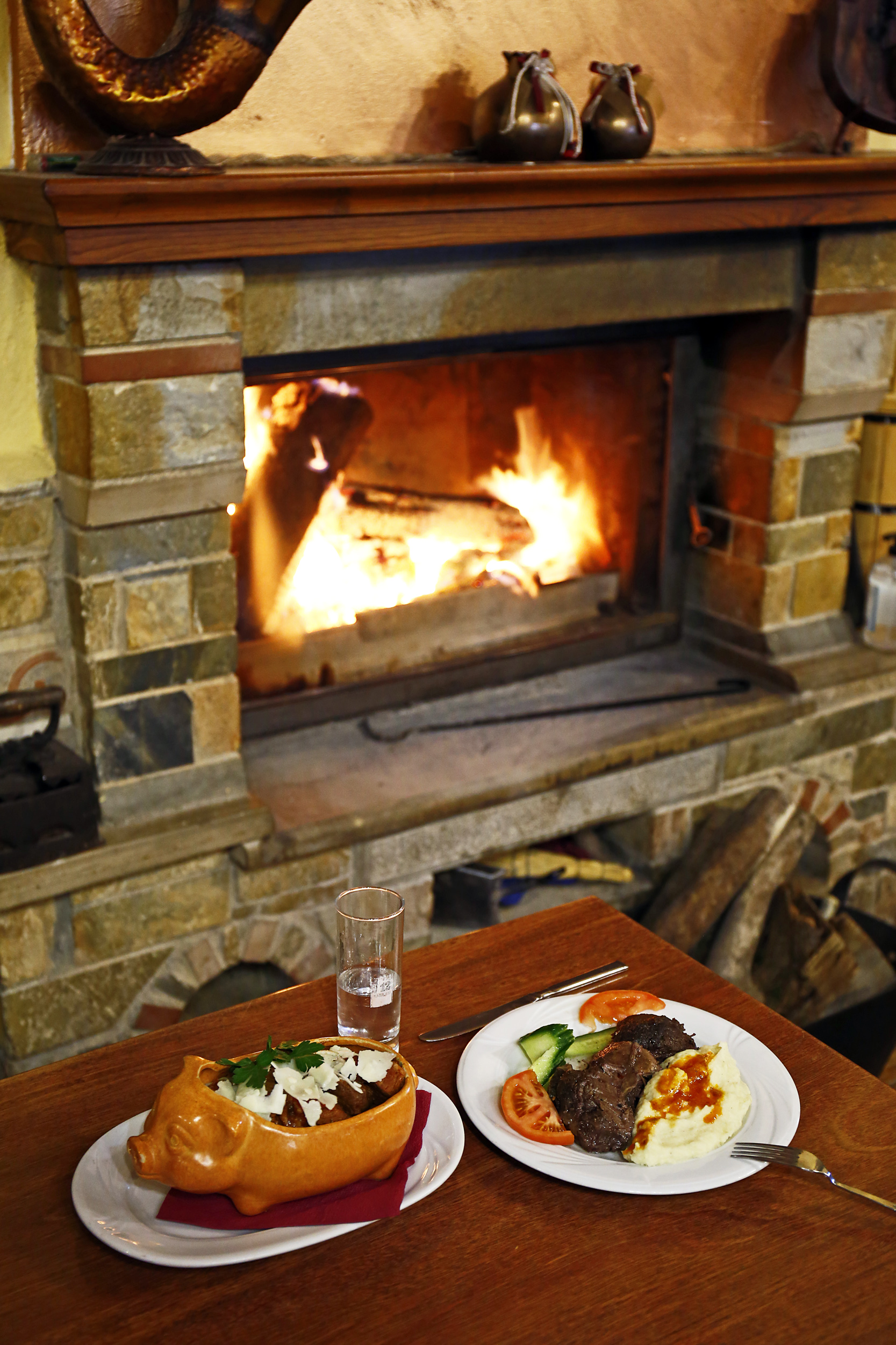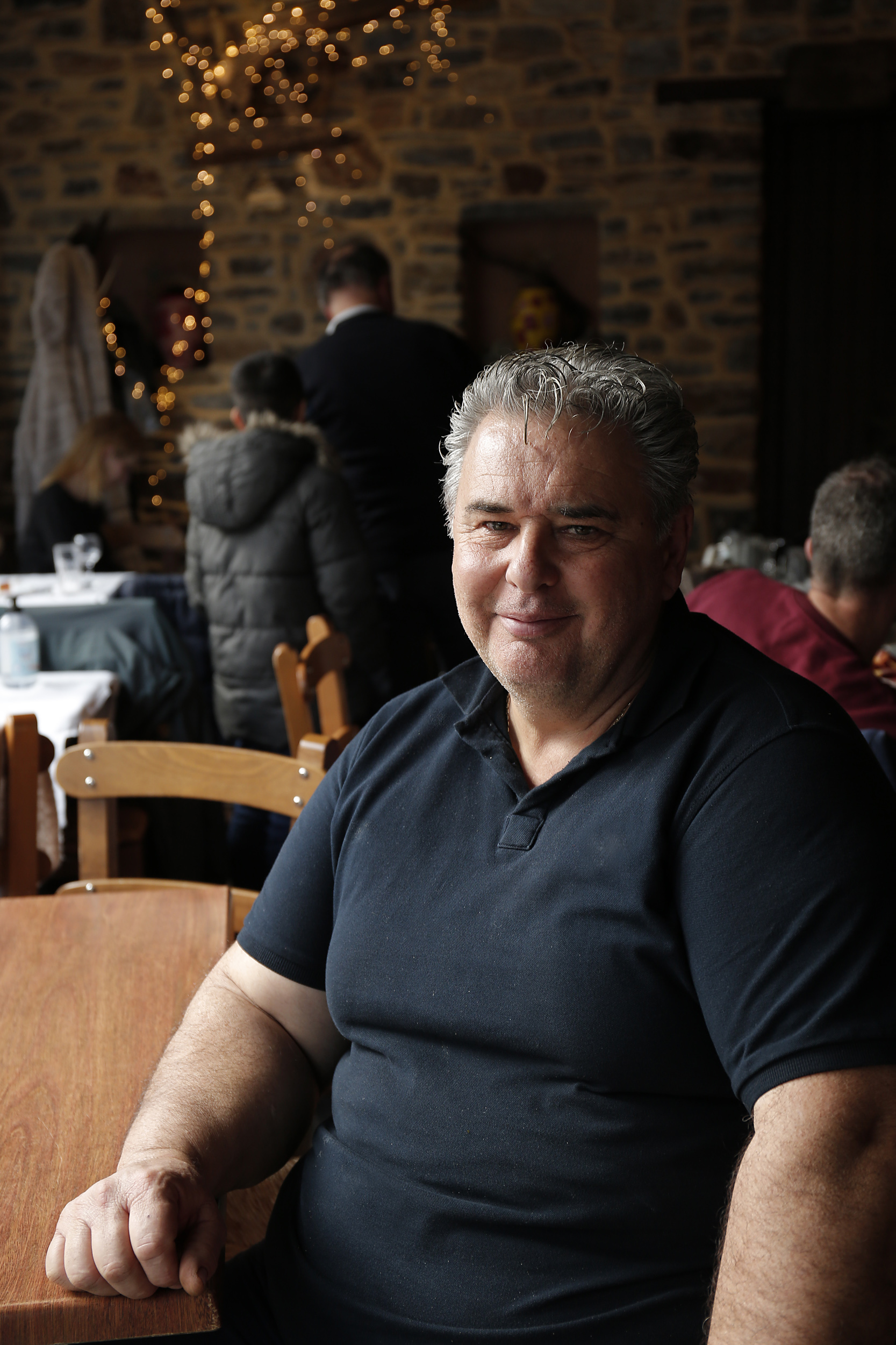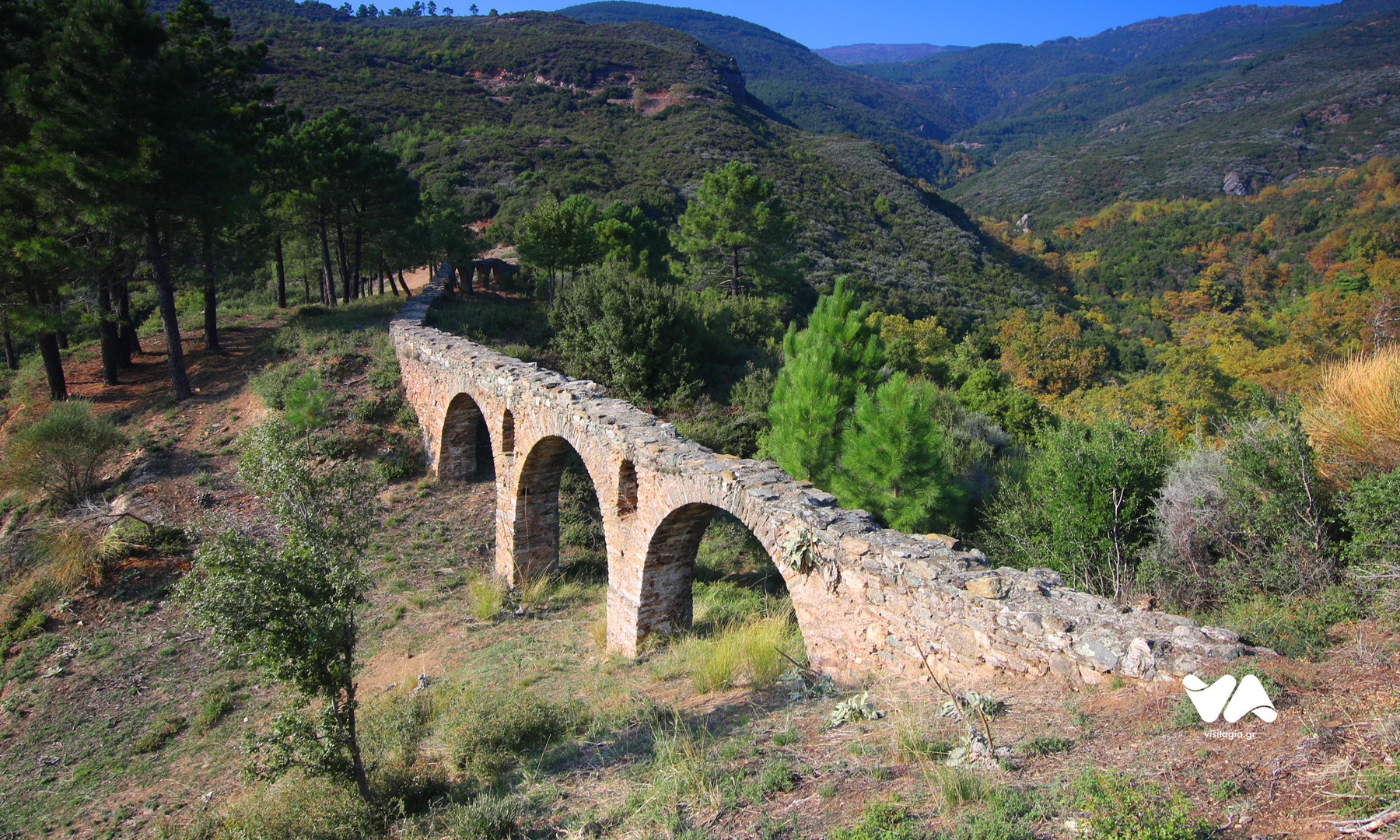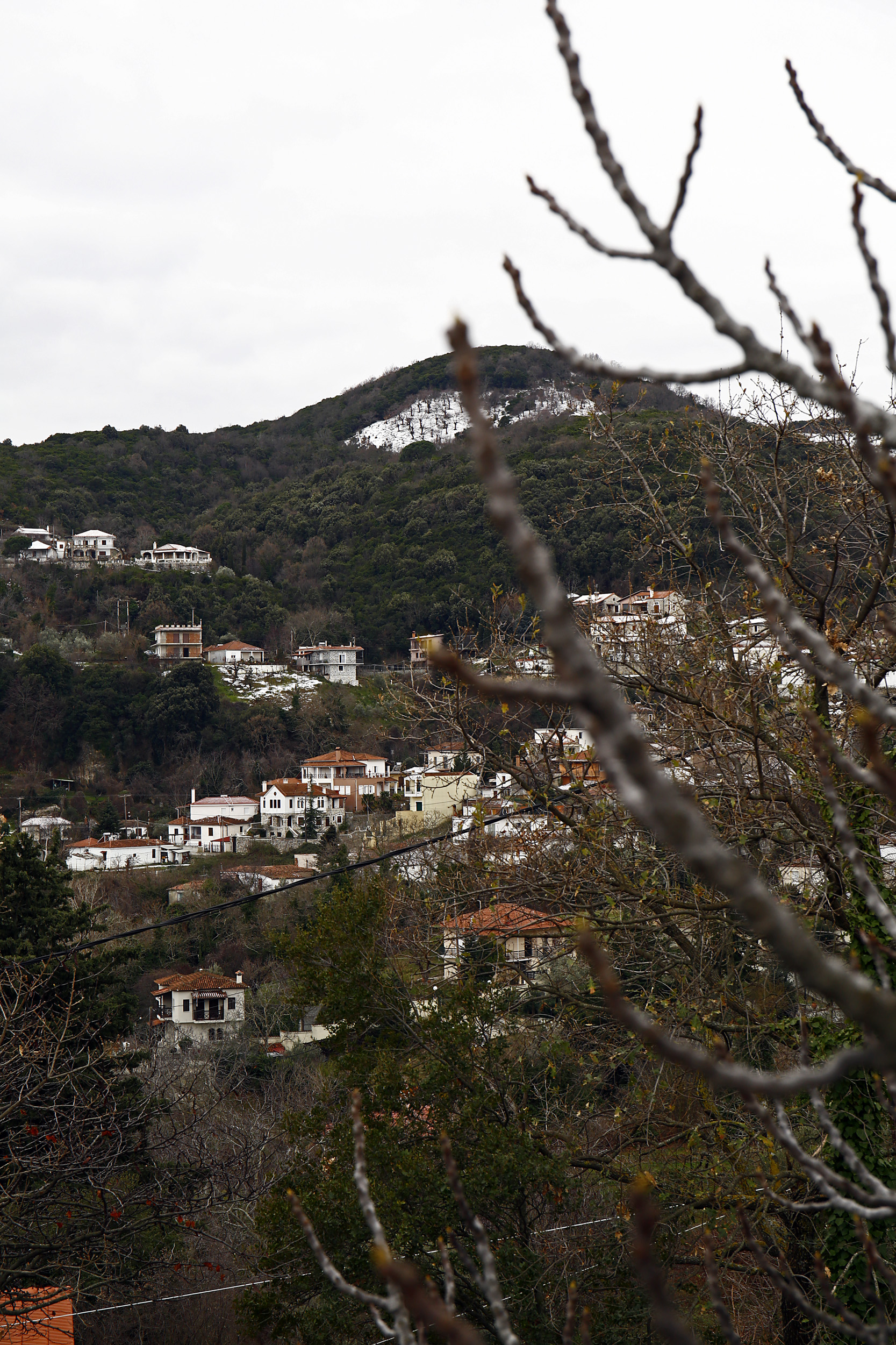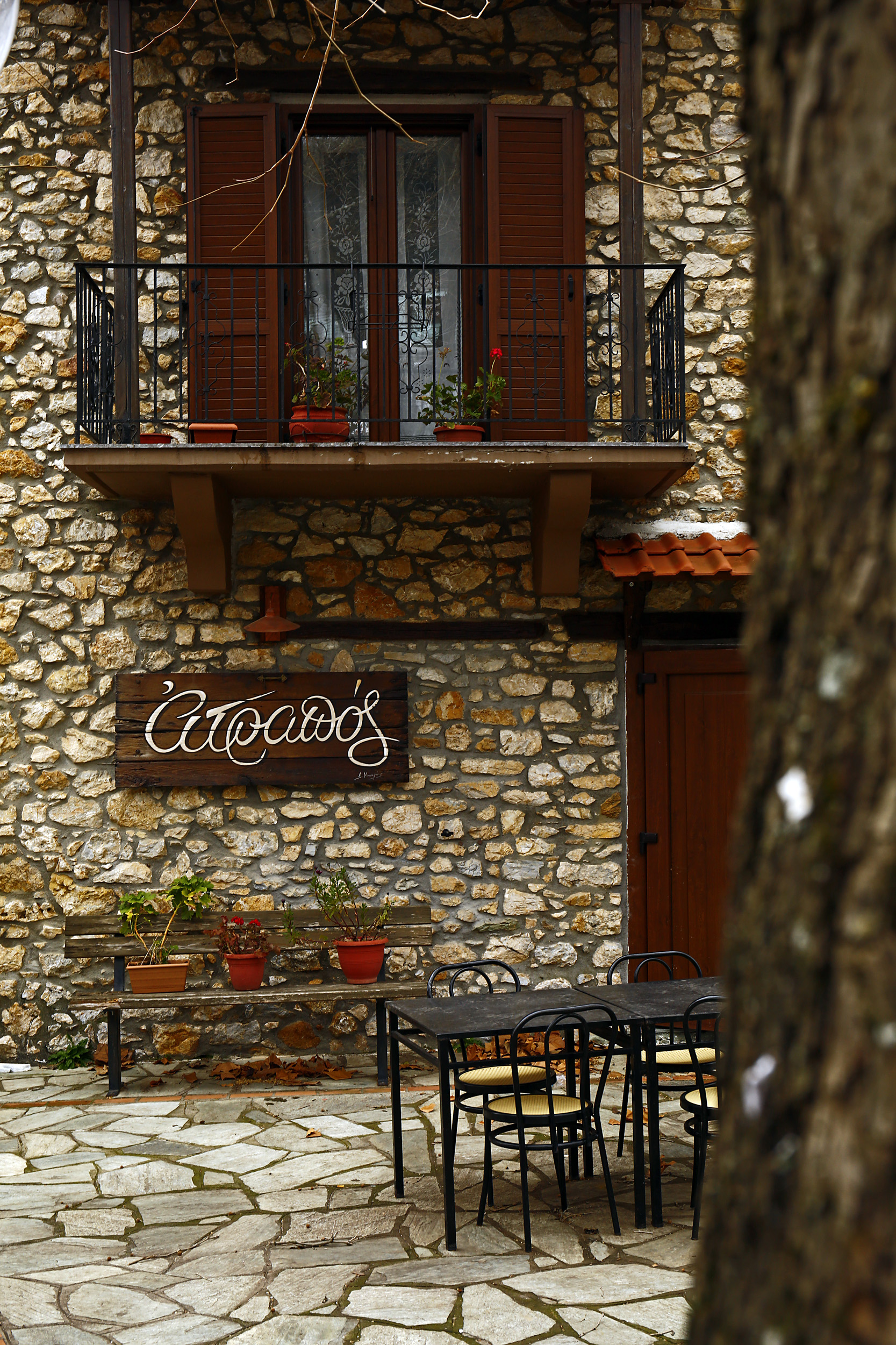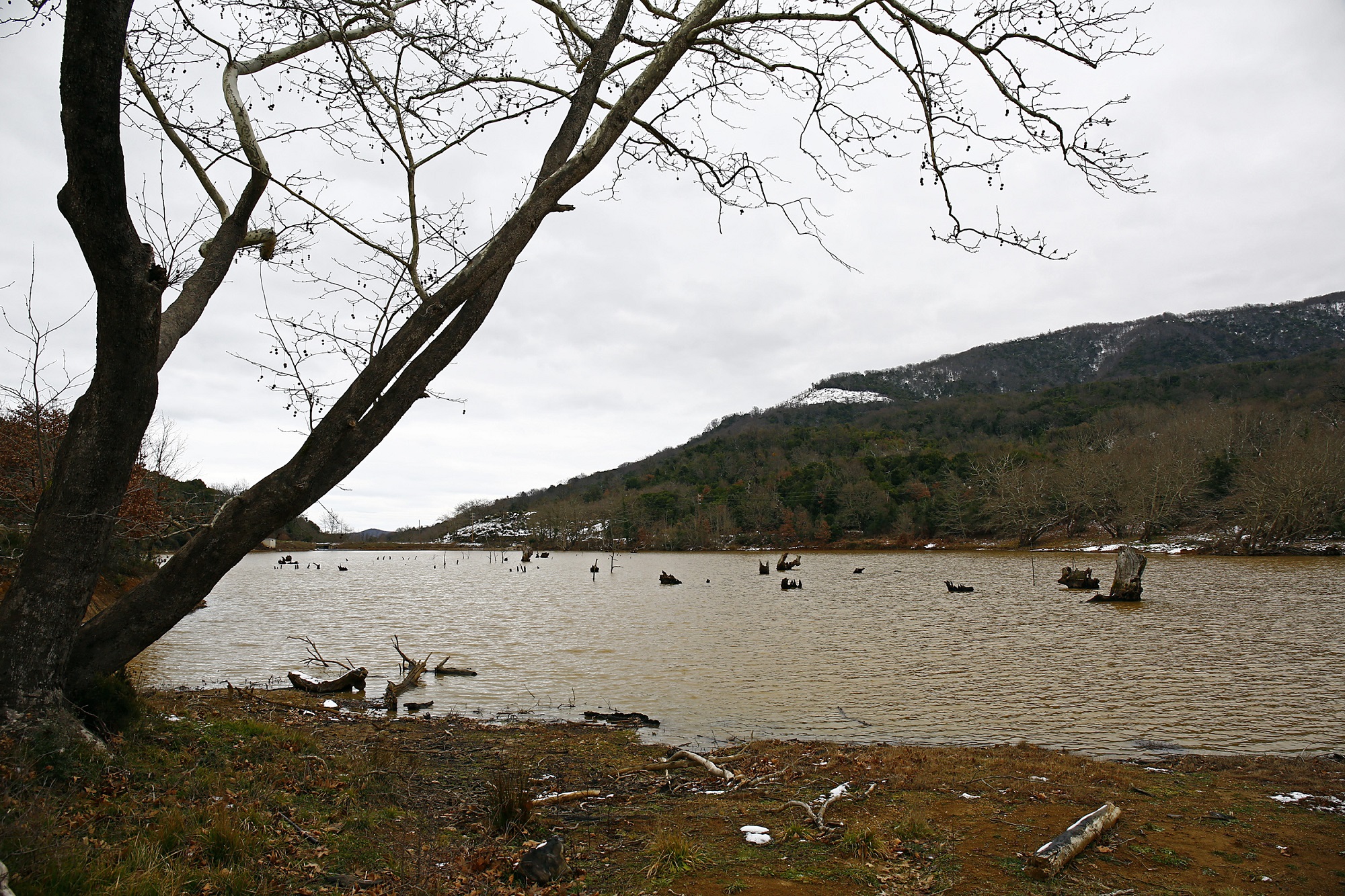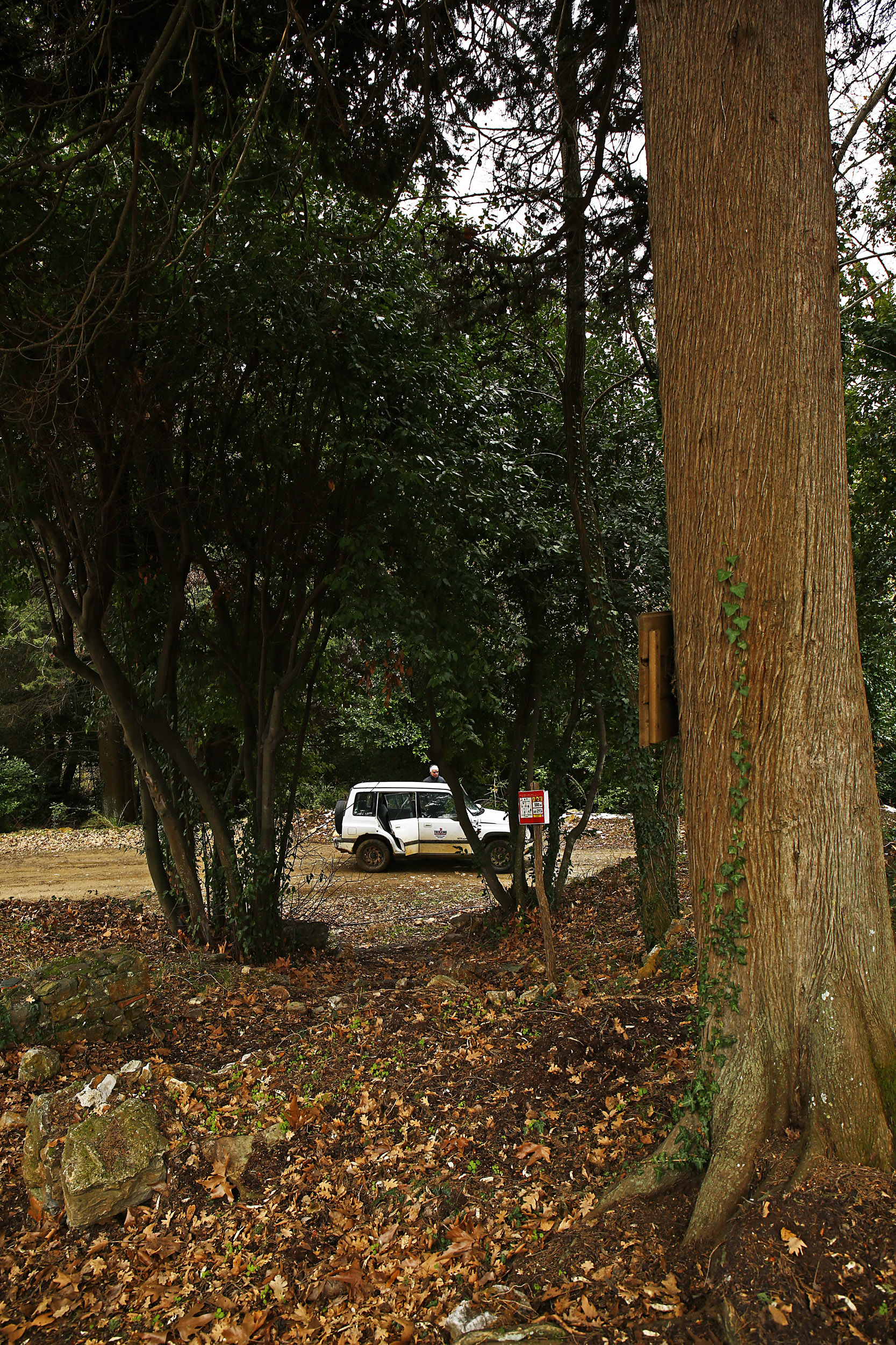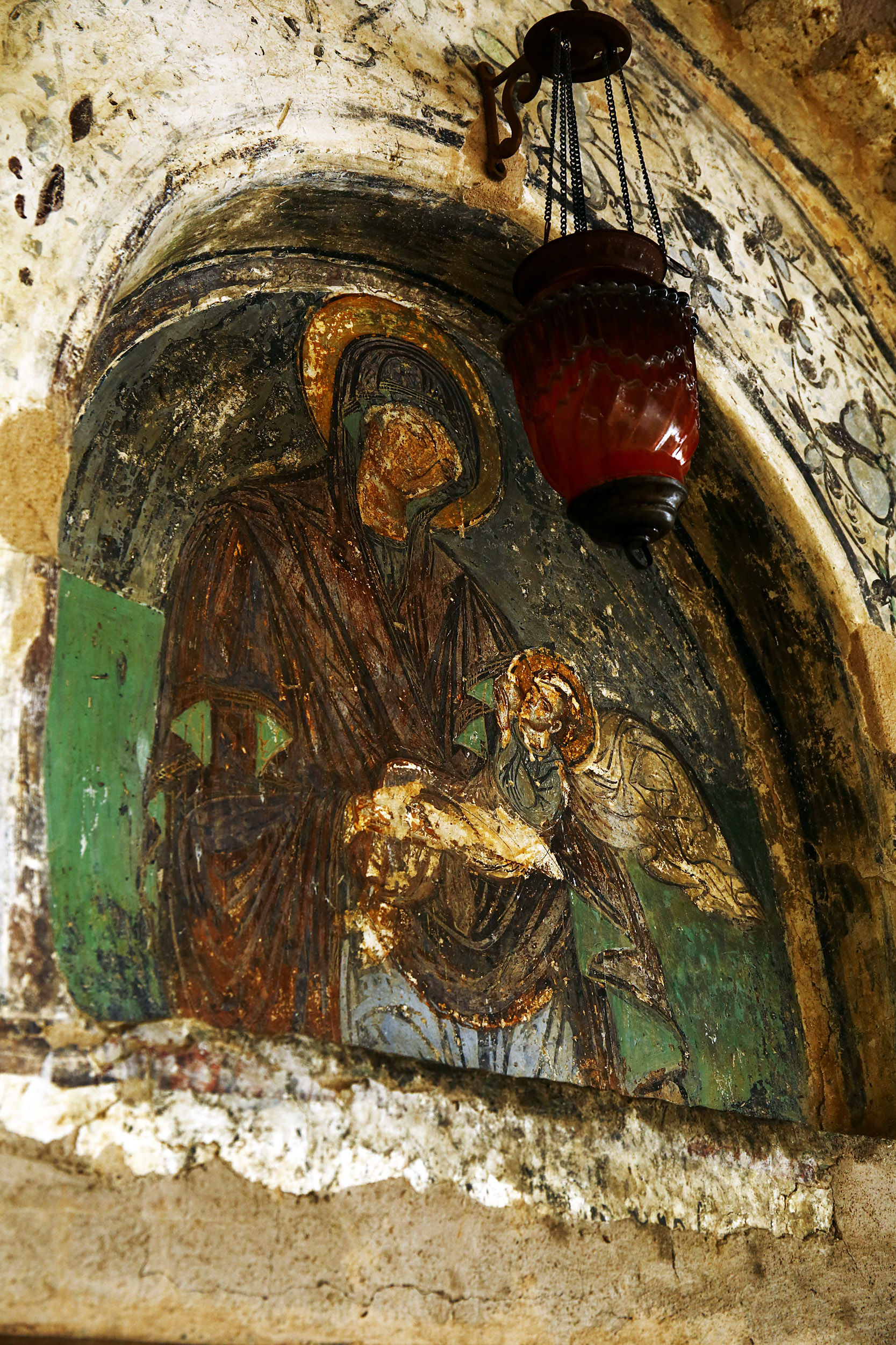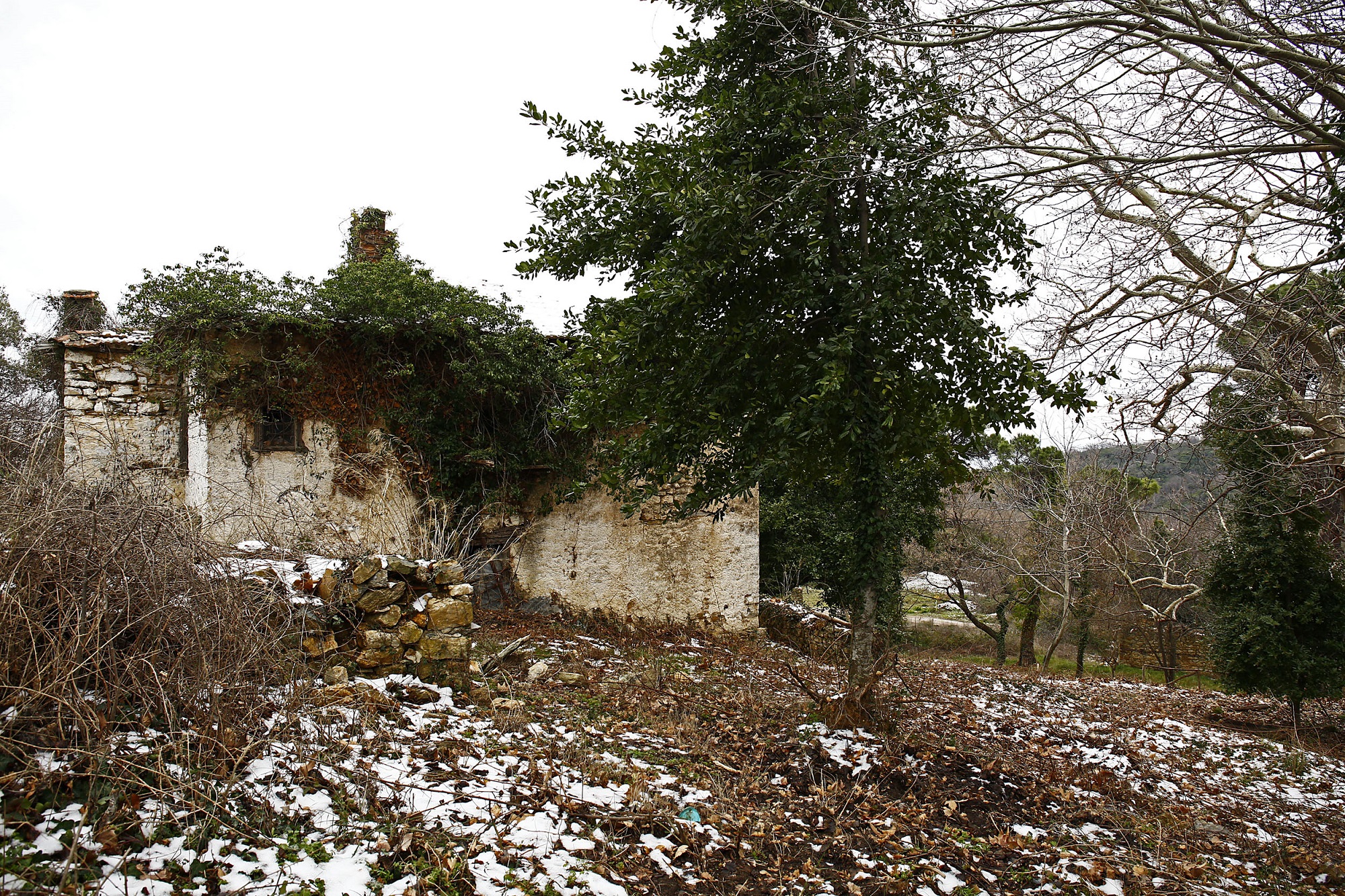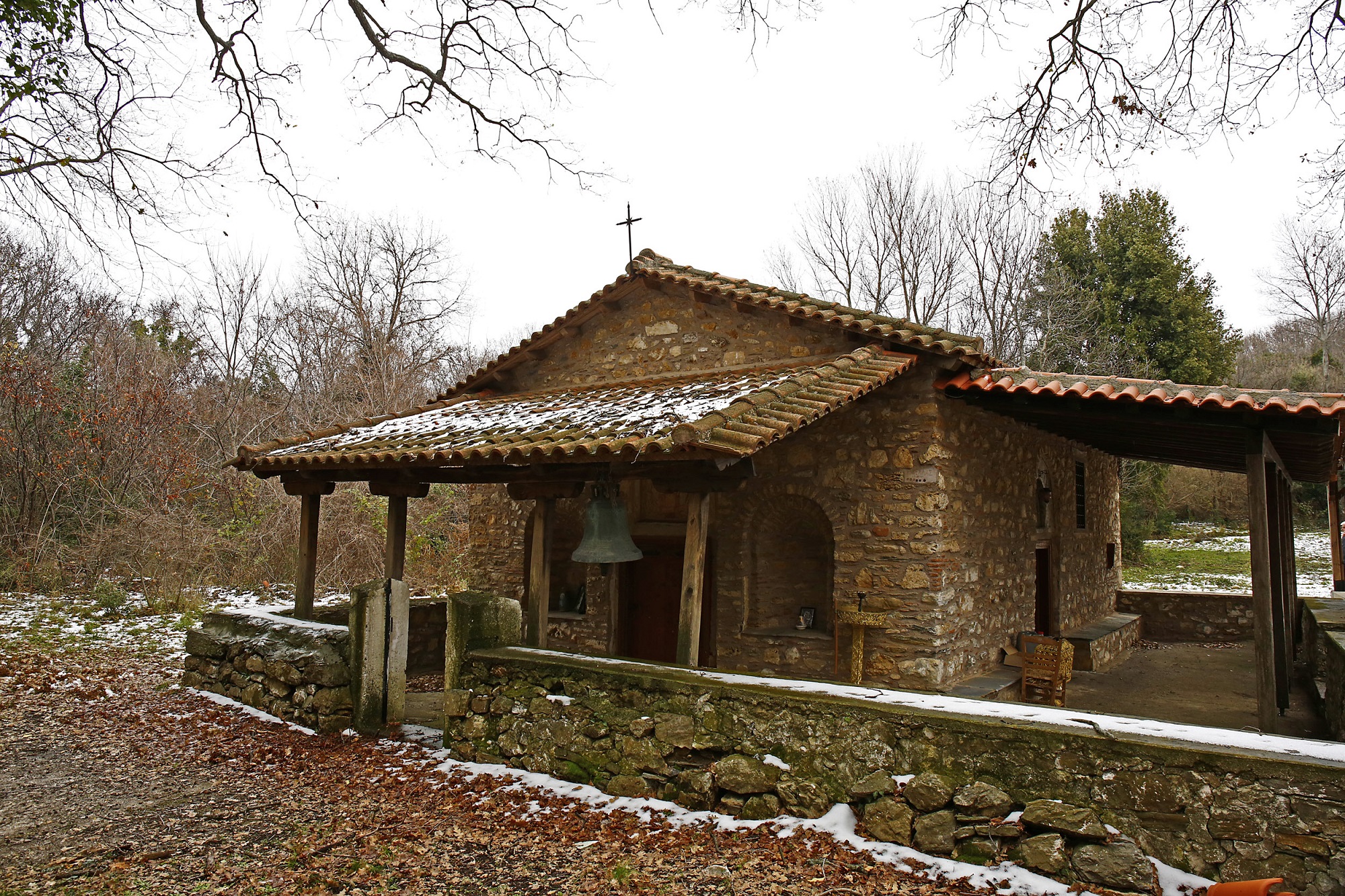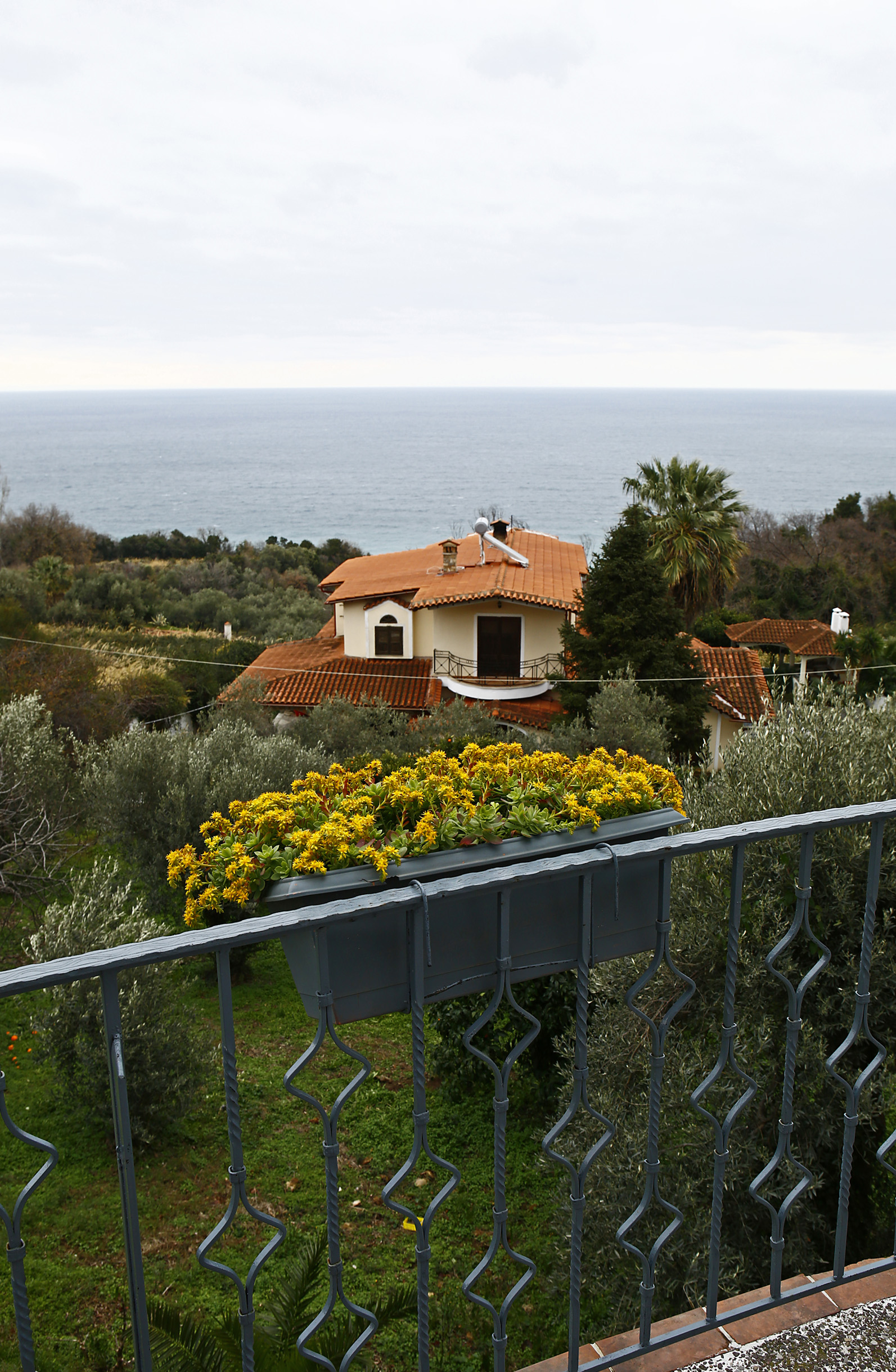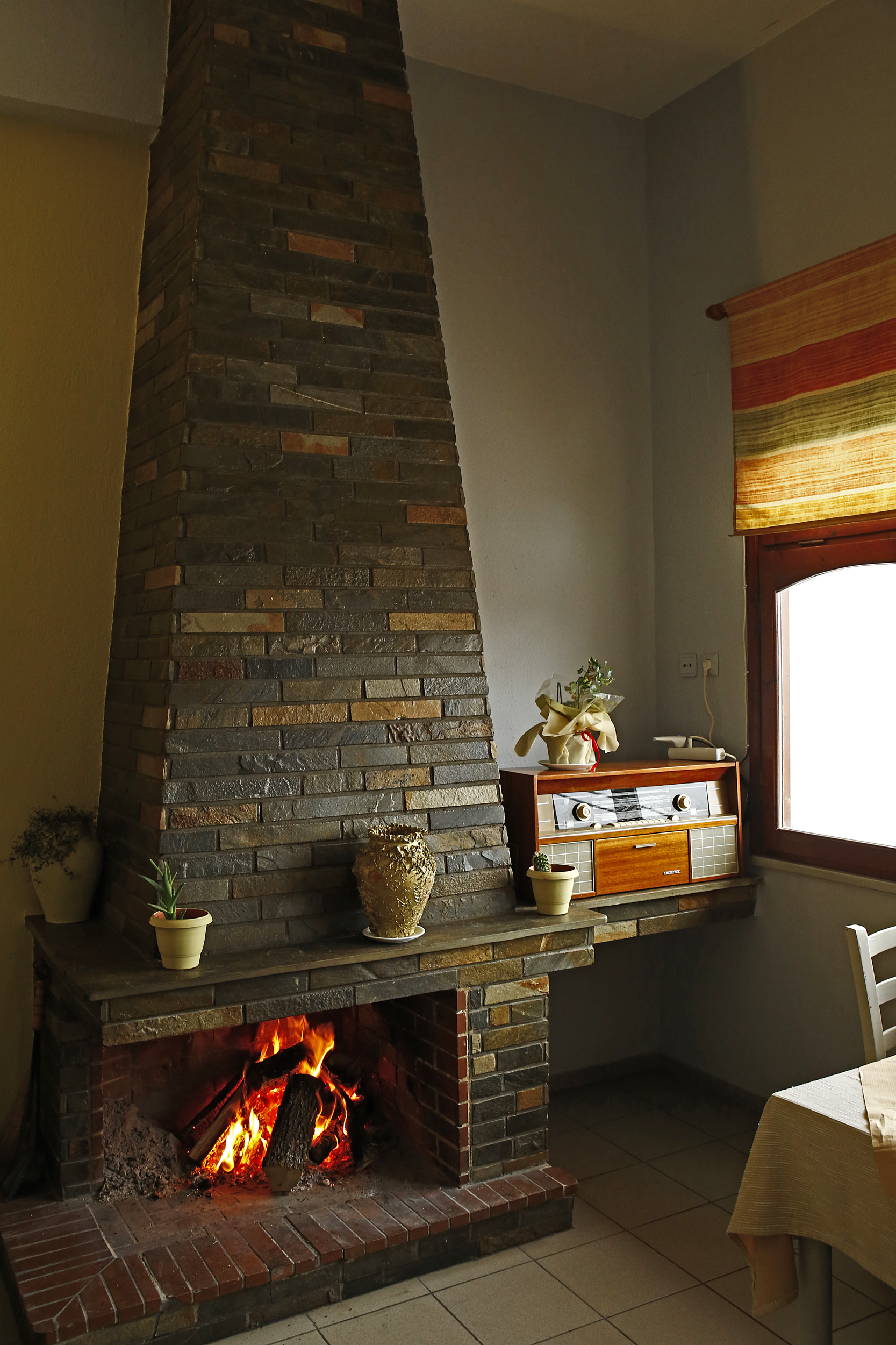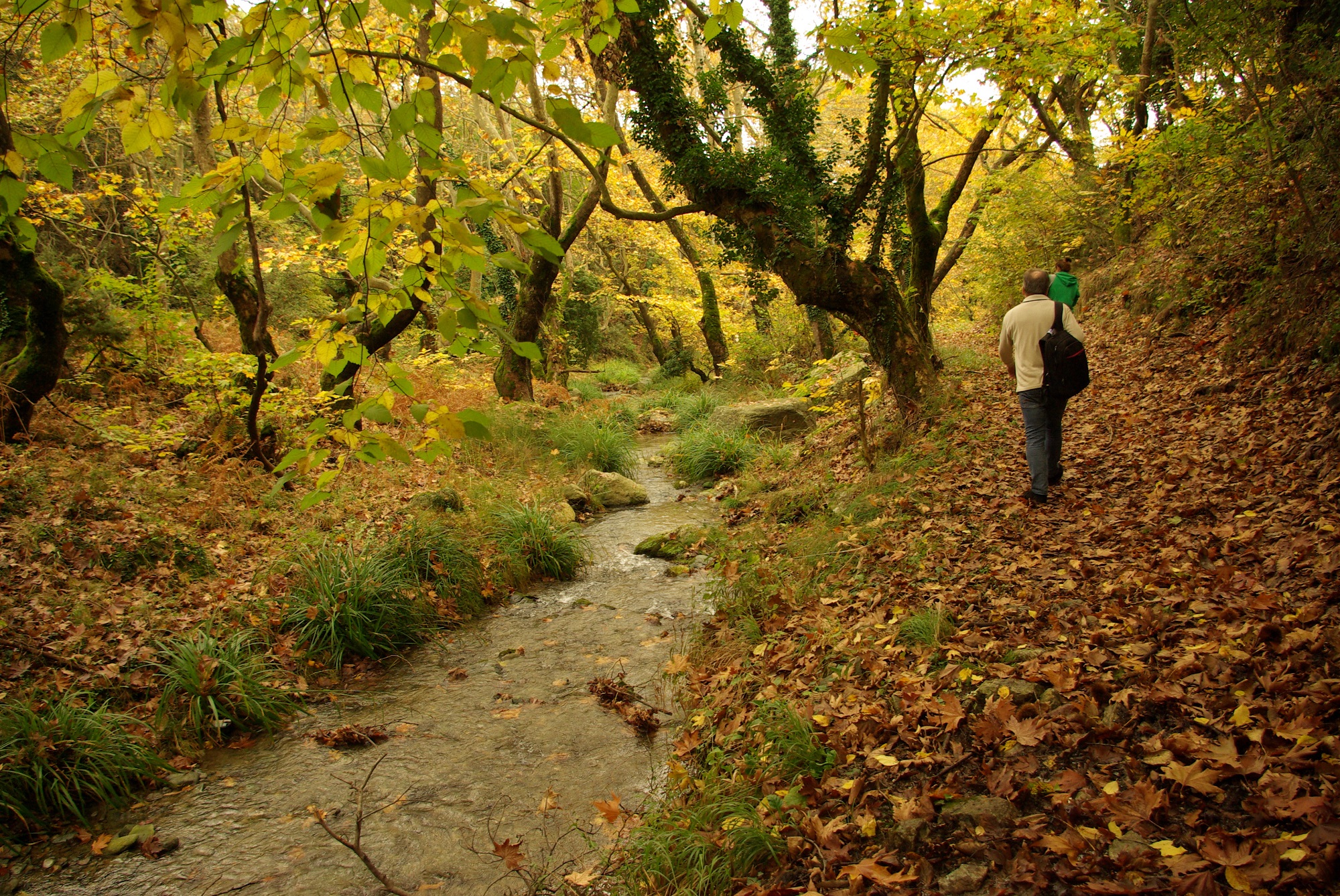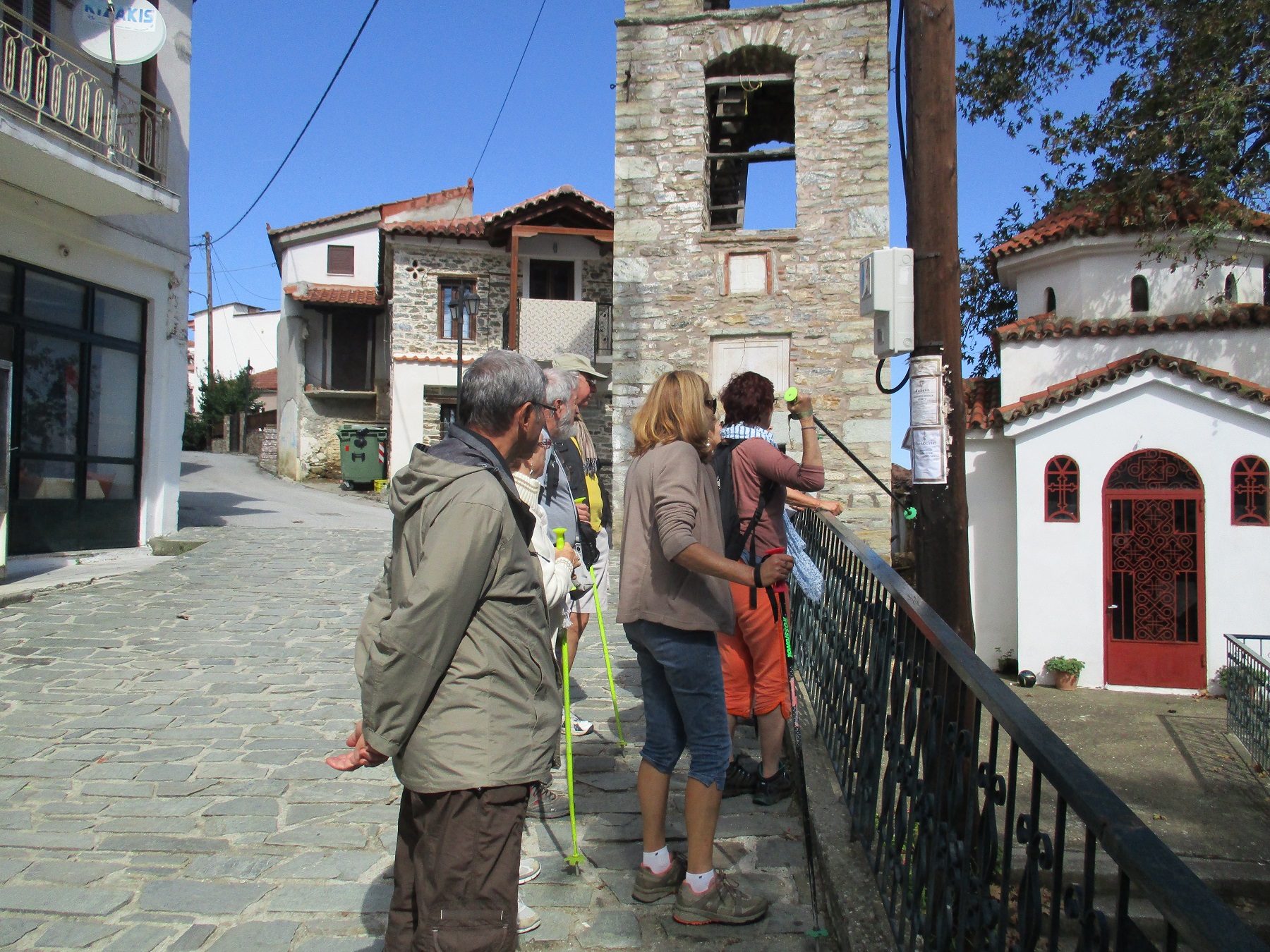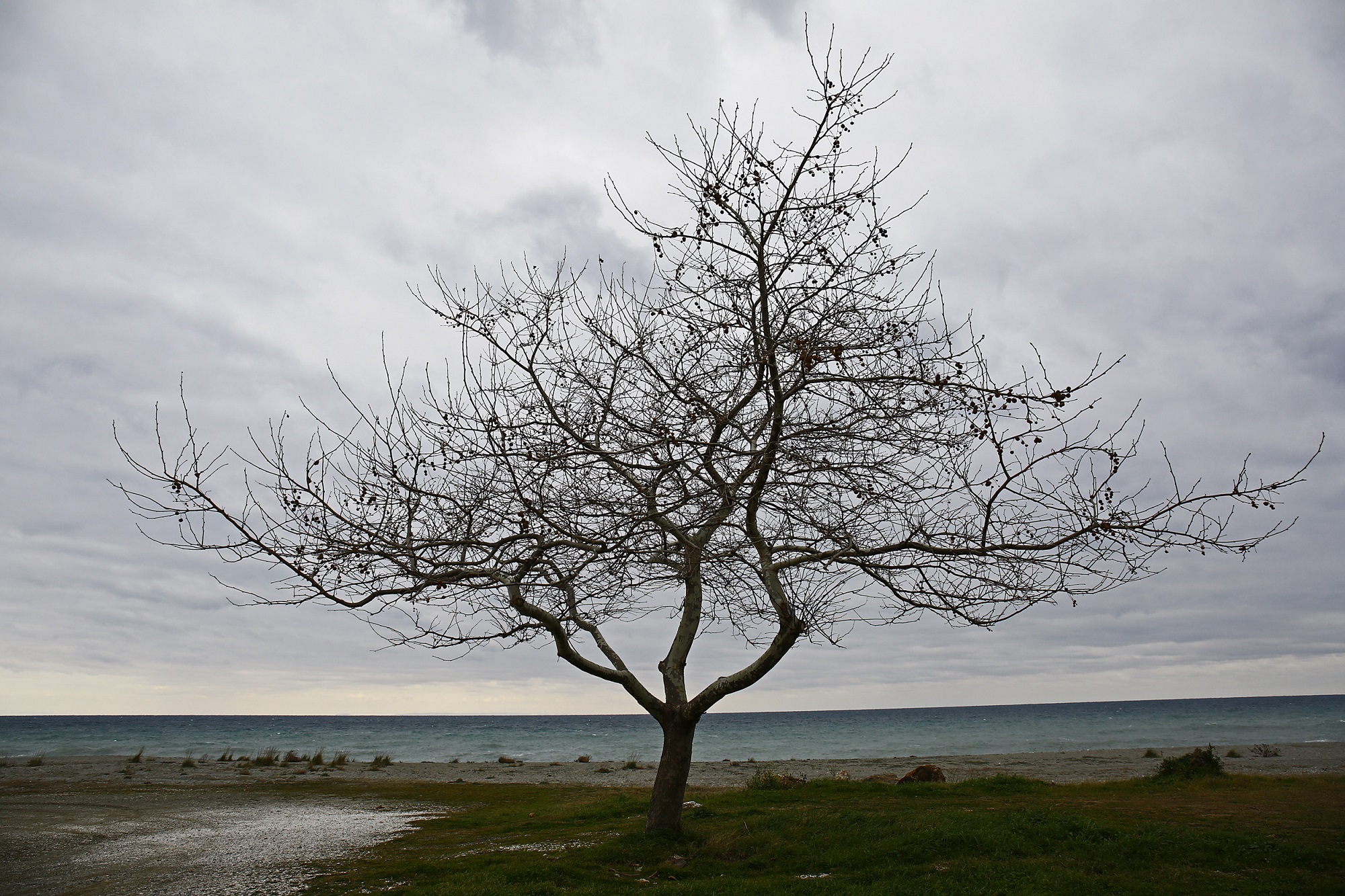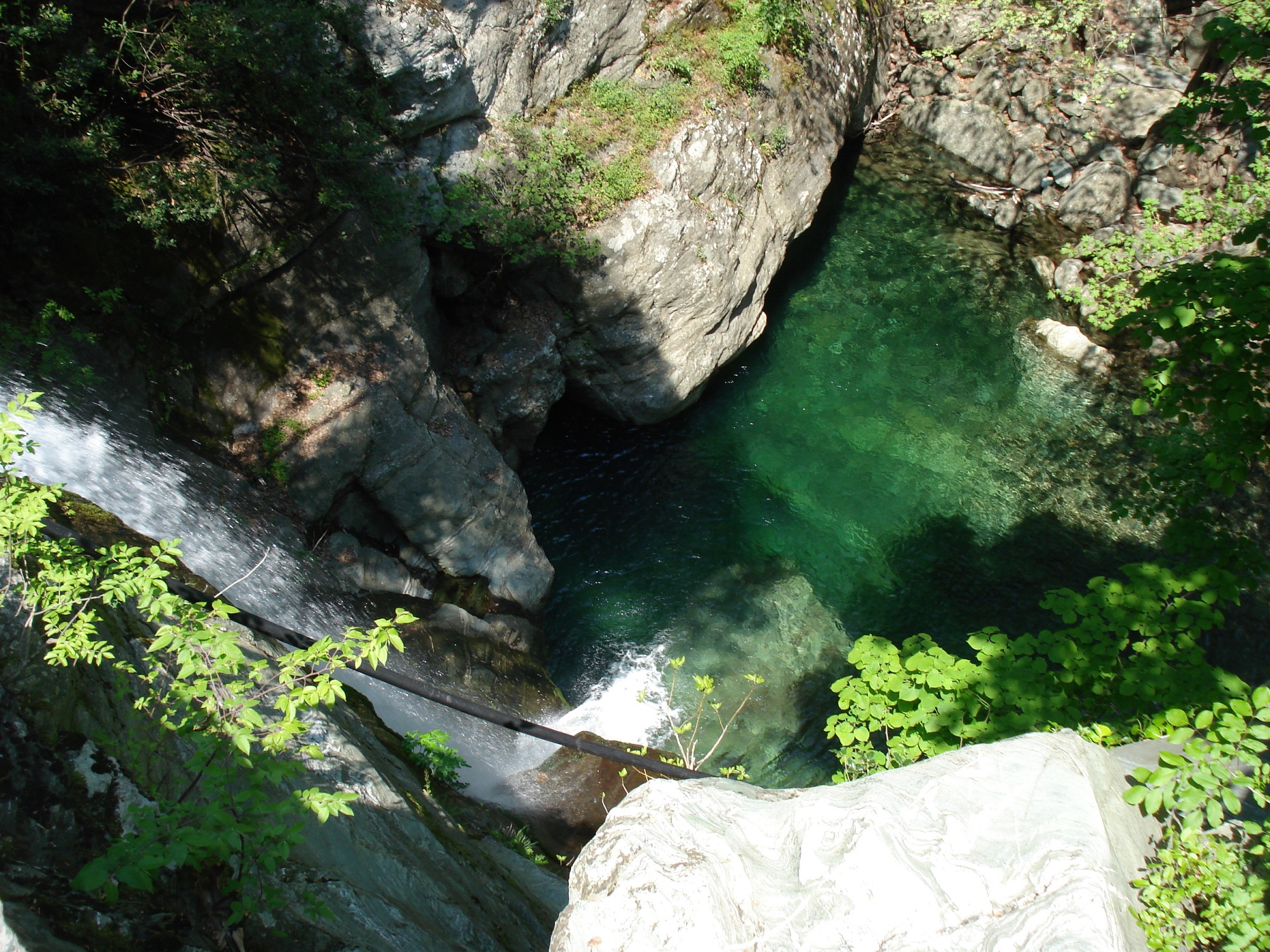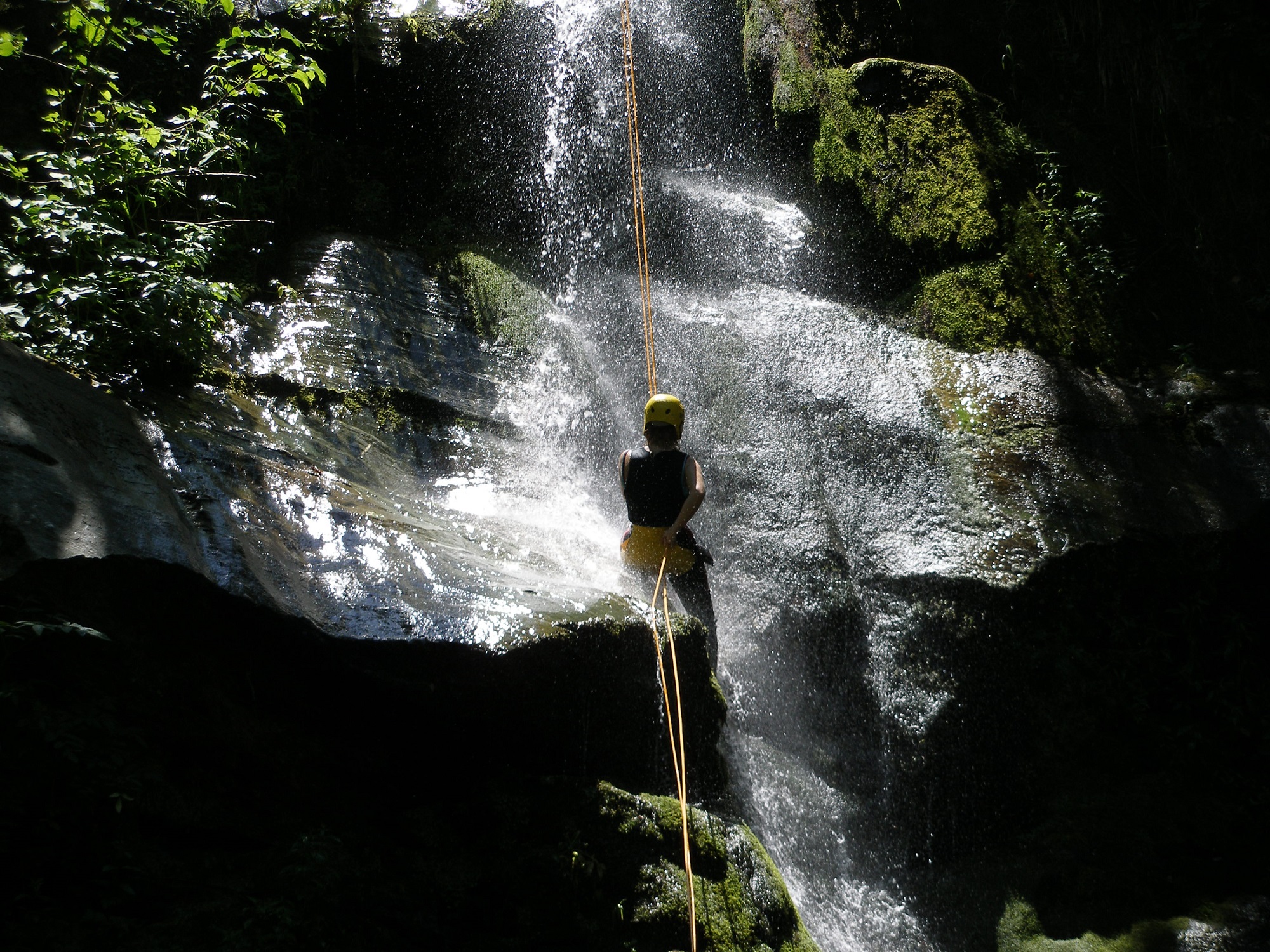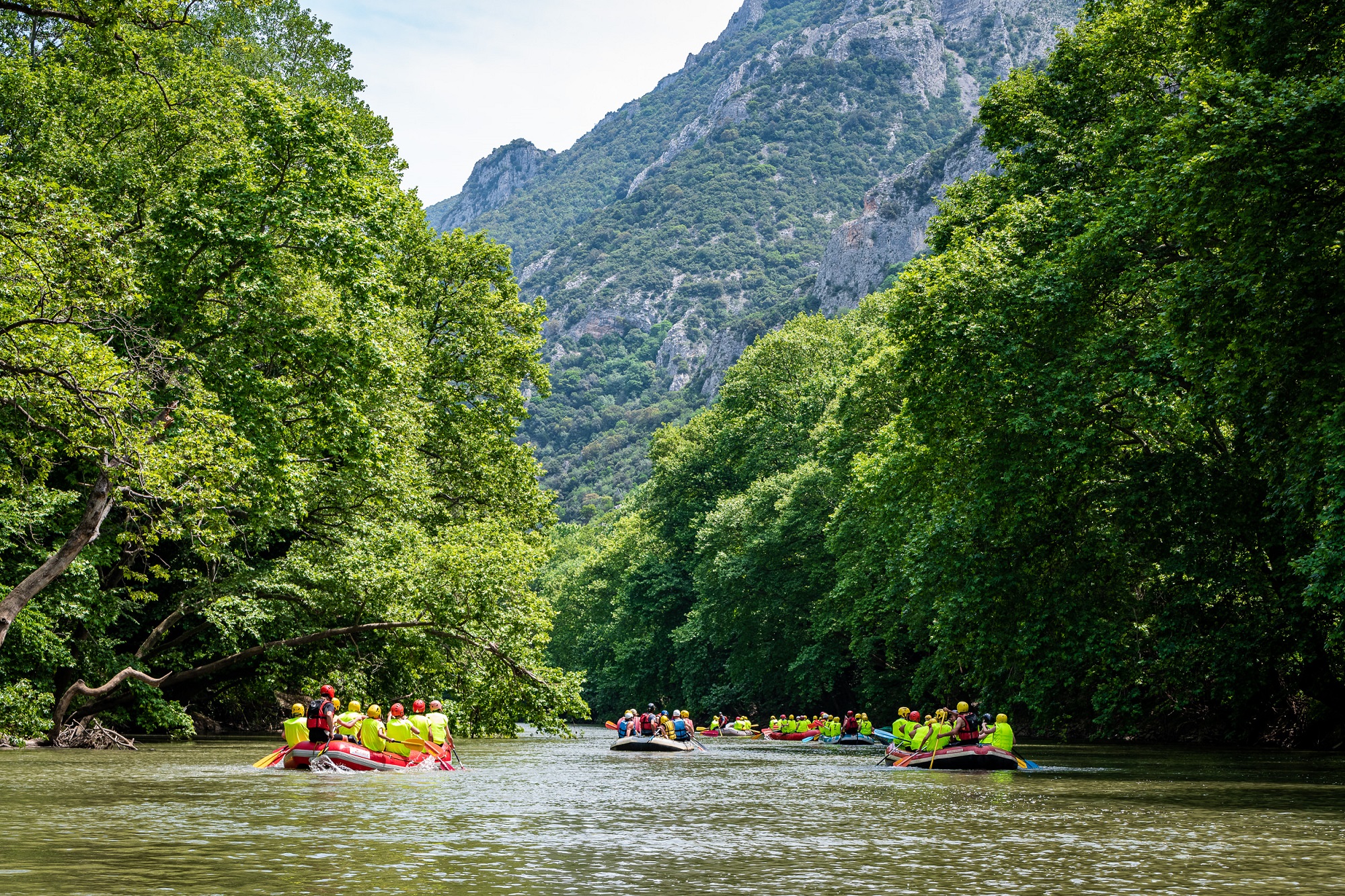Some say that Kissavos is the most beautiful mountain in Greece. Perhaps that’s a little far-fetched but its eastern side is indeed enthralling. Its forests are dense and sometimes untouched by the sun, it has gorges and waterfalls, as well as springs and natural thermal baths. The Aegean Sea stretches around Larissa’s coastline, which is around 46 km long and dotted with 20 beaches of all varieties and styles. A huge bonus at the end of it is the exotically beautiful Pinios Delta, with its lush riverside forest.
On the slopes of Kissavos, meanwhile, a series of mountainous, beautiful stone-built villages have their own alpine existence and keep fixed eye contact with another legendary mountain, the venerable Mount Athos, opposite Halkidiki. Skiti, Melivia, Polydendri, Sotiritsa and Karitsa are not at all far from an endless row of Aegean sandy beaches such as Agiokampos, with its 11 kilometre-coastline, Velika, Kato Sotiritsa, Kokkino Nero, Paliourgia. In less than 10 minutes from these mountain villages, you can descend to the beach for a nice swim.
Agia: The gateway to the villages of Kissavos
At the foot of Kissavos, half of Agia is perched on the mountain and the other half is spread out in the small, homonymous plain, which at the end is embraced by the expansive Agiokampos beach. On the other side rises the almost unknown Mavrovouni: a magnificent mountain of Pelion, which hides its beauty in the imposing shadow of Kissavos. The well-known town has for centuries maintained an important place in the economic life of the whole of Thessaly: it is surrounded by vast areas of apple trees and its apple is an integral part of Greek fruit production.
Leave your car behind and enjoy walking through the old part of the town, where unique neoclassical mansions such as the beautifully preserved Alexoulis Mansion are a testimony to the economic boom of the area in the 17th and 18th centuries. Stop also at the mansion of Kalypso (1891), which has been turned into a historical and folklore museum. Take a nostalgic look at the barber shop of Kostas Koutsogiannis, a real barber shop from another era. Also go to the workshop of Avra Panousopoulou, who signs the famous “Yiam” deli (Petromagoula, 24940-22225) products like jams, special tea blends and savoury goodies that have already made their way abroad. All are made with fruit and vegetables from the plains of Agia.
Agia also has many churches. The Byzantine Monastery of Agios Panteleimon (13th century) in the northeast and the visitable male Monastery of Agios Antonios are two particularly interesting places.
The latter, in fact, has been turned into a religious museum, one of the newest in the country (founded in 2016), filled with historical and religious artifacts such as icons, vestments and sacred texts (most of them from the 1600s), rare handmade works of art, Gospels printed in Venice, wedding crowns, and more.
Visits and guided tours are arranged upon appointment (2494-350121). In the past, meanwhile, Agios Antonios was also used as a sanatorium for people suffering from mental illnesses. So with a shudder, you will see the chains in which the unfortunate patients were once bound, out in the courtyard.
Back in the pedestrianised centre of Agia, take a nice, leisurely stroll among the surviving mansions and many churches. At the end of the pedestrian street, in the upper square of Phillyroi, there is also the taverna “Hatzakos” which serves stews, fresh local meat and pizza. Along the pedestrian street, also stop at “Moschos” butcher’s, where they sell homemade cold cuts such as sausages, salami and smoked pork from their own meat.
Metaxohori
Metaxochori has almost joined with Agia, but retains its immaculate beauty and is the favourite of many acclaimed Greek artists and musicians who have houses here. Plane trees and running water surround the small square and winding cobbled streets run past old, stone mansions. In the Metaxochori of the past, these large houses accommodated not only residents but silkworms too, offering them an ideal environment for growth. As Vali Vaimaki wrote in an earlier Travel.gr article, “from 1760 to 1830, in each home there operated a small craft workshop, where the whole family worked.
Especially from 1855 to 1875, the production and trade of silk and yarns brought wealth and power to the village. The importance given to education is evidenced by the boys’ school and the girl’s school that operated there’. The guesthouse “Archontiko Soulioti” (24940-22040, 24940-22008, souliotismansion.com) is a beautiful and meticulously 19th-century mansion with a paved courtyard where, weather permitting, tables can be set for breakfast or dinner. It is the exclusive choice for accommodation in the entire region.
Amyros, the little river that runs uphill through the village, forms a small waterfall. Across the street is the taverna “To Keramidi” (24940-24030). In her kitchen, Chrysanthi Gatzoya prepares delicious stews, including beef cheeks, three-meat casserole and meat dishes of the day, almost always from locally-sourced meat. Even the people of Thessaloniki, known for its great gastronomy, come here especially to eat. Meanwhile, husband Vassilis Mavrovasilis built the whole taverna with his own hands. He also prepares the halva of Farsala that they serve, with fragrant butter and an unforgettable lacy “croustitsa”. If you eat it when it’s hot, just out of the huge cauldron, you’ll understand what real Farsala halva is all about.
For a wine experience, make an appointment at the “Manolidis Estate” winery (694 438 7238), a very nice place with vineyards on a hillside overlooking the sea and surrounded by forest. The estate produces organic wines from the Malagouzia, sauvignon, Assyrtiko, Lemnos, chardonnay, cabernet, merlot and xinomavro varieties. Depending on the season, agrotourism activities are also organised. Finally, starting from the village square and driving along a dirt road for 1 km (otherwise you can walk along a path), you’ll reach the Old Aqueduct, which looks like an arched bridge with eight arches. Nearby is the 18th-century monastery of Agios Efstathios. The coolness and tranquility will help you forget your worries and relax.
In Metaxochori, festivals and other cultural events are organized almost all year round. Note the big festival of August 15th, but also the cherry festival in October. Information can be found at the Cultural and Recreational Association of Metaxochori (24940-23160).
Skiti
Two paved roads start from Agia, a new one and an older one. The new one leads to the beach, with a stimulating stopover along the way at the church of Agioi Anargyroi, which is located in a stream, next to the road. If you get down and walk, you will see the old hermitages carved into the rock. If you take the old road, again, pass the bridge of Alamanos and climb uphill until you reach the village of Skiti. Just before the bridge, you can turn into the village of Potamia, where you will find the meat tavern “CTAMA” (24940-56000) which serves excellent mutton, kebabs and steak.
The name Skiti, in combination with the nearby hermitages, indicates that at some point in time, monks practiced asceticism here. Skiti was once the Byzantine fortress of Kentavropoli, protected by the walls of Justinian. Today, however, as it is built on a slope of Mount Mavrovouni, at an altitude of just 350 meters, it quietly overlooks the forests that cascade down the slope and the blue of the sea on the beaches of Agiokampos. But behind this first impression of tranquility and purity, the mysterious landscape of the artificial lake of Skiti awaits.
To get there, you will drive 2 kilometres on a dirt road, crossing a forest of huge chestnut trees. At first glance, the eerie landscape takes your breath away. The silence is absolute, the dead trees inside the lake lift their dry branches like bony fingers, and figures take shape on the trunks. If you are even a little interested in the supernatural, you are in the right place. The lake was created by the Larissa Prefecture to collect rainwater and irrigate local crops, while its water is also supplemented by existing springs. It covers an area of 200 acres, while its depth ranges from 2 to 7 meters.
For accommodation in Skiti, there is the traditional stone-built guesthouse “Eos” (24940-51500, 697 208 3474, www.xenonas-ios.gr), with a pool, magnificent views of both the forest and the sea, and a rich breakfast. You can also stay at the beautiful guesthouse (also with a pool) “Amanitis tou Kaisara” (24940-52270, https://www.xenonas-amanitis.gr), at the edge of the village, or at the modern guesthouse “Neon”, next to the square. In this small, sweet square, among the surrounding narrow, stone alleys, is the taverna-meze restaurant “I Atrapos” (697 769 8884) with freshly cooked meat dishes, meze and a warm, hospitable atmosphere. You can also enjoy meat dishes at Panagoulis‘ taverna “I Oraia Skiti” (24947-71140).)
Polydendri
Descend from Skiti and before reaching the long beach of Agiokampos turn right on the back road, which leads you to Polydendri, as the forest is now called (until 2009 it was known as the Royal Estate. This magnificent land once belonged to the royal family of Glyxburg, until 1994 when it went to the Greek State, along with the rest of the royal properties. It is located at an altitude of 1,054 metres, on Mount Mavrovouni, between Kissavos and Pelion and spread over 35,000 hectares. Part of it is a park, while the rest is dense, wild forest. It is an incredibly beautiful place (it has been designated as a Natura 2000 area), with hundreds of species of plants, birds and wild animals, such as wolves and deer.
The entrance to the forest is demarcated by the ruins of homes and infrastructure that just a few years ago still stood and was used for accommodation. Today, however, it has collapsed and soon there will be no trace of it. Crossing the dirt road between the towering trees, in silence, you will reach a huge clearing. A space for recreation and relaxation dominated by the Church of Panagia, which dates back to the late 16th century. On the floor, there are ancient inscriptions, indicating that there was an older shrine at this location.
During the winter the heavy clouds and fog create an atmosphere straight out of a horror film. If you walk a couple of minutes behind the church you will also reach the Monastery of the Assumption of the Virgin Mary, founded in 1568. Both churches are adorned with beautiful and very old frescoes. The whole area, although ideal for touring, picnicking, hiking or cycling – especially in spring when everything is in bloom, remains unexploited. Structures built over the last 50 years (benches, carved paths, cycle paths) are slowly deteriorating, while the buildings are falling apart. Nature, however, stands dramatically beautiful and intact. Generously alluring and indifferent to any degradation.
Leaving the forest behind and heading downhill towards the sea, stop at Kato Polydendri, at the Goulas brothers’ fish taverna “Balkoni tou Aegiaiou” (24940-51475, 694 488 3775). Fresh fish that smells of iodine, a view all the way to Halkidiki (and if the weather is good as far as Athos), two fireplaces, an amazing old radio and a rock music soundtrack to the delicious sea bream and squid you will enjoy.
Melivia
A green, beautiful, semi-mountainous village with old, stone houses and many churches -among them the one of the Assumption of the Virgin Mary, built in 1800. Melivoia is famous for its large production of first-rate chestnuts: they have the largest fruit on the market, are whole, easy to peel and can be made in all kinds of ways. In fact, a chestnut museum is being set up in their honour.
There’s the amazing hiking trail that immerses you in the lush heart of Kissavos. Starting from Melivia, it winds its way through a beautiful route and ends up downhill at the beach of Velika, which is like the seaside resort of Melivia, near Kato Sotiritsa. The entire trail takes about 3 hours to complete. Along the way, if you follow the path next to the stream, you’ll also come across the waterfall of Ano Sotiritsa: a dreamlike place where you expect nymphs and fairies to appear in front of you at any moment (this should take around half an hour).
“La Gantem” is a surprise restaurant-wine-coffee bar located in the heart of Kissavos, in the square of Mayor Yiannis Gallos, which the locals refer to as “Plaka“. The cuisine is Italian-inspired, delicious, and skillfully prepared, with many tasty pizzas baked in a special oven inside the restaurant, several types of pasta, and various meat dishes. Dishes served here include the beef cheeks in gravy with mashed potatoes and wild mushrooms, Black Angus beef flank with braised mushrooms and red wine sauce, and smoked black pork chop with caramelized Megalovryso nuts.
The menu is curated by Chef George Papadopoulos, while Chef Yiannis Haratsis works in the kitchen. The restaurant’s name is actually a French translation of the word “gantemis,” which is also the nickname of the mayor of Agia, Antonis Gkountaris, who owns the establishment. Finally, for those seeking accommodation in the village, there is the stone-built guesthouse “Athanati” (which is the old name of Melivoia) with simple but sufficient amenities (698 067 5033, 694 950 4292).
Karitsa
After taking the coastal road again, leave behind the beaches of Agiokampos, Velika, Sotiritsa, Paliourgia, and Koutsoupia, pass by the Red Water with its jugs and cold, therapeutic baths – and if you want, make a stop to drink water – and following the signs, climb up to Karitsa. This semi-mountainous village is built amphitheatrically at an altitude of 250 meters, drowned in greenery, and gazing majestically at the endless view of the Aegean Sea.
Stone-built houses, uphill and downhill alleys, many stairs, narrow, cobblestone streets. The village square with its magnificent plane tree and small cafes is beloved, always with a view of the sea. If you happen to be here in mid-October, you will also enjoy a big festival with roasted chestnuts and music, as chestnut production is one of the main occupations of the locals.
Alternative tourism is a fundamental element of life and the economy of Karitsa, fueled by the surrounding lush forests, canyons, and amazing hiking trails – either towards the peaks of Agia Triada, Prophet Elias, and Dragasta, or towards small, secluded beaches in the summer. One of the most beautiful mountain routes in Greece starts here and reaches the village of Spilia, passing through dense forests with chestnut, oak, and oak trees in a thousand shades of green.
The location of “Agriopino,” four kilometres outside the village and deep in the woods, is the perfect spot for a fairytale picnic. And the traditional cafe “Agriopino” is a real surprise, hosting many concerts and serving delicious food based on game, stews, and local meats. It also serves coffee and is open daily from June to August and on weekends from September to May (697 868 6734).
The region’s abundant waters give rise to magnificent waterfalls that tumble down into breathtaking gorges, with the Kalyvia Gorge being the most renowned among them. You have the option of going canyoning, which involves descending into the canyon, or simply hiking to the first waterfall, which has a small pond. Gigantic plane trees gracefully lean over and caress the water’s surface. The entire village serves as an excellent base for various outdoor activities, particularly hiking to Melivoia, even up to Sykourio and Larissa, using well-marked paths.
If you’re looking for accommodation, the “Villa Christina” guesthouse (694 432 6529) is well-appointed and provides meals for guests. Another option is the superb stone-built “Dohos Hotel Experience” hotel-resort, which opens at the beginning of spring and comes complete with a pool and food (24950-92001, https://dohos-hotel-experience-larissa.ibooked.gr/).
Activities
In all the above villages, you can enjoy easy hikes in wild forested nature, full of gorges, streams, waterfalls, and bridges. Of course, you can also take longer routes, for example from Agia to Skiti and on the paths of Mavrovouni. Additionally, there’s canoeing and kayaking in the Delta of Pinios River and biking in the riverside forest of Pinios.
To return to Larissa, starting from Agia, the distance is about 34 kilometres or around 40 minutes in terms of the time you’ll need. For the more adventurous, consider the aforementioned canyoning in Kalyvia Gorge in Karitsa, as well as rafting in the Tempi Valley. Outdoor activities are organized by Trekking Hellas East Thessaly in Melivoia (24940-51809, 693 229 2086, www.trekking.gr). We thank Mr. Nikos Daggas, Deputy Mayor of Tourism for the Municipality of Agia, for his assistance in the realization of the report.
Read also:
5 stops for coffee and food in Larisa, Greece
The Fierce White Waters of Aspropotamos in the Heart of Greece



